In
the late 1950s Eddie Daniels and I were classmates at The High School of
Performing Arts in New York City. After graduating in 1959 we went off in
different but similar directions, working in a musically wide range of our
profession. Our paths crossed rarely but when they did we usually spoke about
doing something together. On one of those occasions Eddie was engaged as a
soloist with the Cincinnati Pops Orchestra. I learned of it a few weeks before
the concert, called him, and after a short conversation it was decided that I
would compose a piece for him to be premiered at that concert. The "Rhapsody for
Clarinet and Orchestra" was born on May 8, 1987. Unfortunately it was one of
those programs for which only one rehearsal was scheduled, leaving no
opportunity to make changes to the music or even play through it more than once.
Luckily, with the combined skills of the soloist, orchestra and conductor, the
piece managed to get around all of the usual sight- reading pitfalls and end
without serious incident.
About ten
years later our paths crossed again and once more we talked about doing
something together. This time there was no performance scheduled and we had more
time to think about what direction we'd like to take. For starters we elected to
go with a smaller ensemble - a string orchestra. We also decided that the music
should try to inhabit that betwixt world - on those Bridges - between jazz and
classical music. That treacherous ground that never fails to bring out the
guardians, the protectors-of-the-faith and divine messengers of both musical
camps to weld their swords against any contamination that might infect their
precious charges. This is a delicate area, laced with mine fields and other
traps that have tripped up many composers and performers over the years. But
after having navigated its waters for close to 50 years - Eddie playing
consistently with premiere jazz artists, while at the same time regularly
performing the staples of both the clarinet concerto and chamber music
repertoire with major ensembles throughout the world, and I having had the
opportunity to compose for world-class soloists in both of those worlds - we
both felt confident that we could come up with something musically worthwhile,
and if not, we were determined to have a good time trying! It also happened that
we were coming up on the 100th anniversary of George Gershwin's birth (1898).
Gershwin was probably our first true cross-over composer, not so much because of
what he had already accomplished, but more for where he was surely headed before
his untimely death at the age of 38. The resulting work, "Sketches of Gershwin,"
which we decided to dedicate to George on his 100th Anniversary, sat dormant for
nine years. A suitable performance opportunity just didn't present itself.
In early
2006 I was perturbed about never having heard the Sketches and was discussing
this with Eddie. We both wanted to hear the piece under the best possible
circumstances - i.e. not at a quick read-through rehearsal for a concert - and
decided that the best route to go was to record the piece with a small string
orchestra made up of very strong players. We began to plan the sessions, and as
we searched for dates and availability of players thought that it might be fun
to also include some companion pieces to the Sketches. This led to even more
grandiose ideas. By the time our conversation had finished it was decided that
we would do a whole project together calling on our long experiences in both
styles of music. Our self-imposed challenge was to keep Gershwin in mind during
the whole adventure. Using some of his melodies in separate arrangements is
always great fun but keeping a bit of his essence present in some less obvious
ways is even more rewarding.
What does it
mean to be working in this (for lack of a better term) crossover world? To many
the term itself is off-putting. But if we're able to get past arguments of
definitions - especially the old standbys about what is or isn't jazz - and all
of the preconceptions that accompany them and cut to the matter at hand: what
does this mean for the music itself? - we might see that one important puzzle
that must be solved is: how do we combine the improvisational aspects of one
style with the importance of formal structure of the other. While it certainly
isn't necessary, or even expected to use the common forms of older music, they
can be really valuable in helping to keep us (composers) coherent. Delving
deeper into this subject is far be- yond the scope of this program note, but
it's helpful to know that when we introduce foreign matter into any musical
style it's a sure road to chaos when all the rules are thrown out. Of course
chaos in itself can be a great tool, but when and how to use it for great
effectiveness is another point that needs our attention.
Introducing the aspect
of improvisation, especially jazz improvisation into an otherwise classical
situation presents its own set of questions: How do we make it work logically
within the context of the material that we are using? How do we avoid making it
sound like an alien add-on that makes no musical sense? Answers to these
questions always lead to more questions: How much freedom do we give the
performer? How much do we control the material that is improvised upon? We are
sure to find ourselves in deep water without a life jacket when we dive into
this risky sea unprepared. If we try to control every aspect of the performer's
improvisation it's sure to sound stilted. If we just say improvise here and give
very little or no guidance we run the risk that it will just sound like a big
splice from one unrelated piece into another. Maybe it becomes time to think
about Duke telling us: "It don't mean a thing if it ain't got that swing."
Surely this is one of those situations where the success of each performance
changes radically depending on the skill and inspiration of the improviser. But
since we already know that everything has its own kind of swing, we listeners
and performers can look forward to each performance being a premiere.
The "Sextet for Clarinet and
Strings" is in three movements. The first is the most conventional, serving to
introduce the material much the piece is based upon. The second is basically in
two parts - slow and fast. If Gershwin seems to come to mind now and then, don't
forget we are thinking about him. There are several improvisations - in
different styles - in this movement which closes quietly. The last movement,
after an introduction reminiscent of the beginning of the first, puts all of the
previously played material together with enough twists and turns to bring things
to a rousing finish.
In thinking about Gershwin
and his influence on American music it is only natural to wonder where his music
would have gone had he not died at the age of 38 and was able to keep the
creative juices flowing for another 25 or 30 years. This is not an easy question
on which to speculate. In our youth-oriented culture, conventional wisdom
likes to tell us that creative artists are the most productive in their early
years, and there is plenty of evidence to support that supposition: Richard
Strauss had written almost all of his most important tone poems by the age of
35. Trumpeter Clifford Brown died at the age of 25 but is still celebrated as
one of the most influential improvisors the jazz world has ever seen. Pianist
Glenn Gould had accomplished enough for any five human beings by the age of 30
and continued to thrive until his death a few days after his 50th birthday. On
the other hand we have the Italian Opera composer Giuseppe Verdi who created two
of his greatest masterpieces late in life: Othello at the age of 73 and
Falstaff when he was 80! Franois Rabbath, in his 76th year continues to
push the bar ever upwards for double bassists. Not enough? How about composer
Elliot Carter, born in 1908, who in November 2005 had world premiere
performances by the Boston and Chicago Symphonies of two new works on two
successive evenings!
Conventional wisdom aside,
it is always fascinating to theorize on what roads Gershwin might have traveled
had his health not failed him. His prodigious song catalog alone has guaranteed
singers and instrumentalists prime material for generations to come. His gift
for melody was an inspiration to an elite golden-age generation of songwriters.
Rhapsody in Blue - commissioned in 1922 by Paul Whitman for a concert
billed as An Experiment in Modern Music - showed signs of a young
composer wishing to push popular music in a more adventurous direction. By the
time Porgy and Bess opened in 1935 Gershwin could be regarded as one of
our supreme crossover artists. It is very difficult to instigate change in any
institution that has gotten used to doing things its own way. Was Porgy
an opera? Was it a musical? Both audiences and critics were confused (and
probably suspicious too) and it closed after only 124 performances. Although
some of Porgy's songs became popular before his death in 1937, Gershwin
never knew of the huge success that it was to become.
While working on Sketches I
tried to keep George in mind. His roots in the Ragtime and 1920s Jazz age served
as an atmosphere or tableau for me. If the listener looks for overt quotes or
even small hints at Gershwin tunes he'll be disappointed, as that was not what I
was up to. If however, the overall essence and harmonies suggest a road he might
have explored later, then she'll be on the right track.
Kalamazoo Gazette
Fontana
opening concert successfully bridges East and West
By
C.J. Gianakaris
Special
to the Gazette
Recent
seasons programmed by the Fontana Chamber Arts have stretched listening
capacities of audiences by commissioning original works by gifted composers and
by programming more ecumenical compositions from broader geographic areas of the
musical world.
Wednesday
evening's season opener, ``Bridges from the East,'' featured four newly
commissioned works that required exotic musical instruments from China. The
program at Dalton Center Recital Hall was largely successful.
Wang
Guowei on the erhu (a two-stringed instrument) and Yang Wei on the pipa (a
four-stringed, pear-shaped lute) are exceedingly fine artists who know how to
coax extraordinary music from their instruments. Wang Guowei opened the program
playing ``Song of Henan,'' a Chinese traditional piece. Sounding a bit like a
fiddle, the erhu defined a thin, plaintive melodic line comparable to a singing
voice.
Yang Wei
followed on the pipa with ``Traditional Folksong of the Yi Tribe.'' Strumming
and plucking the strings, he produced music akin to the banjo or mandolin. With
picks on several fingers, Yang Wei brilliantly elicited full-ranged melodies.
John Bruce
Yeh and Teresa Reilly, playing different-ranged clarinets, performed two works
together -- the commissioned piece ``Little Cabbage,'' by Bright Sheng (present
in the audience), and several selections from ``Two & Three Part Inventions,''
by J.S. Bach.
The work
by Bright Sheng held greater interest because of his masterful scoring for
E-flat and B-flat clarinets. Peng (Pamela) Chen's commissioned work ``Spring
Silk II'' was also performed by the ensemble.
Rousing
Wednesday's audience the most were commissioned works by Victoria Bond (who was
present) and Lu Pei. ``The Birds and the Queen Phoenix,'' by Lu Pei, requires
erhu, pipa, soprano clarinet and bass clarinet. Composed to artistically
replicate the sounds of nature, particularly birds, the piece was a delight.
Uncanny
naturelike sounds emerged from each of the instruments, including chirps,
trilling, buzzing, tapping, croaking and, finally, a deluge of bird-whistle
chirpings. The players seemed to enjoy performing the work as much as the
audience enjoyed taking it in.
Victoria
Bond stepped on stage to comment on the design of ``Bridges,'' her work for the
ensemble. Four actual bridges inspired her, and each bridge was musically
transform
their natural sounds into a lovely, meditative aura.
Two other
bridge sections proved valid and interesting, but forced the erhu and pipa into
traditional roles of fiddle and banjo, depriving them of their full attributes.
©2006 Kalamazoo
© 2006
Michigan Live. All Rights Reserved.
|
|
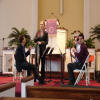
|
|
Bonade Clarinet Quartet
|
|

|
|
Bonade in performance
|
|

|
|
Quartet in bow after performance
|
|
|
1 April 2006
New Jersey Clarinet Symposium Premiere with Bonade Clarinet Quartet
Bernardsville, New Jersey USA
A new work performed by this
professional Clarinet Quartet entitled 'Drummer Dances' by
Gene Pritsker
includes the following information of interest: the work is based
primarily on rhythms from 2 famous drumsolos.
The first 30 bars take the rhythms from Max Roach's solo in Delihah
Dances, as recorded on the Clifford Brown
and Max Roach album. The music develops further using the 4 bar drum
breaks from the same composition.
Elvin Jones' drum solo on 'Monks Dream' is the other
rhythmical source material in this piece. There are 32 bars
of this solo in a more linear development. Two distinct
melodies are heard throughout this piece, they appear in
different variations within the various rhythms the 2 drum
solos provide.
|
|
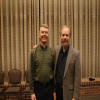
|
|
USMA Solo Clarinetist with Dana Wilson
|
|

|
|
LTC Holton presenting Mr Wilson with Appreciation
|
|

|
|
Combs performing Liquid Ebony with Band
|
|

|
|
Dana Wilson demonstrating work
|
|

|
|
Combs soloing with band
|
|
|
18 March 2006
West Point Clarinet Summit and Premiere of Dana Wilson's 'Liquid Ebony'
for Clarinet and Band
West Point, New York USA
The USMA Band performed its
finale Gala Concert in conjunction with this 2 day symposium for Clarinetists
with
artist alumni Steve Girko and soloist Larry Combs. This work was
originally composed for Mr Combs in 2002 and
premiered in its Clarinet/Piano
version at the 2003 ClarinetFest in Salt Lake City. This work was scored for
Band
utilizing many color concepts that were quite effective using these
resources. Mr Combs performed with high momentum
and intensity and the
Band collaborated to a very high tribute. Prior to the performance, Mr
Wilson held a presentation
explaining fully the ideas behind this piece with
demonstration and active audience questions about the work. Information
about Mr Wilson is presented below.
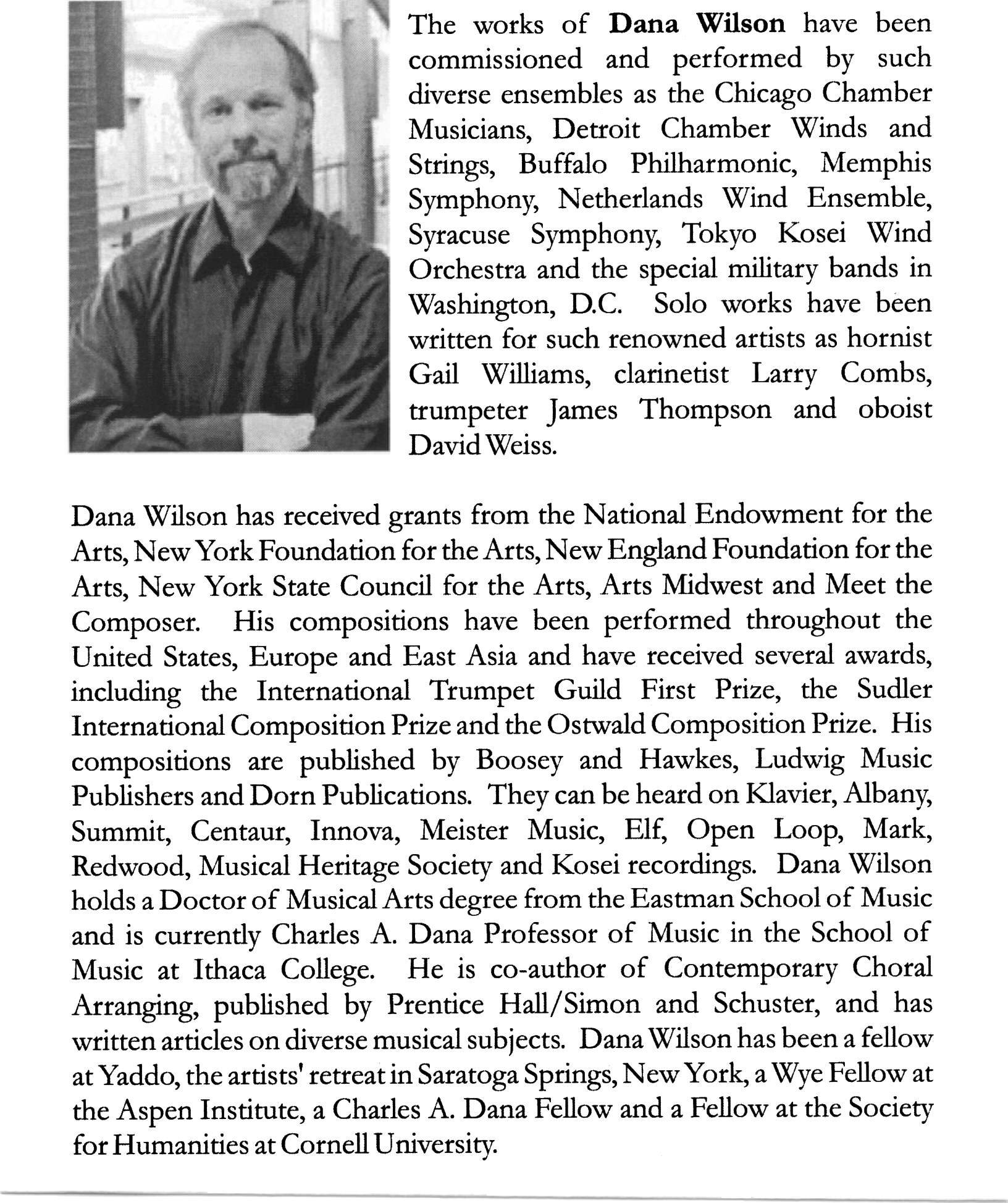
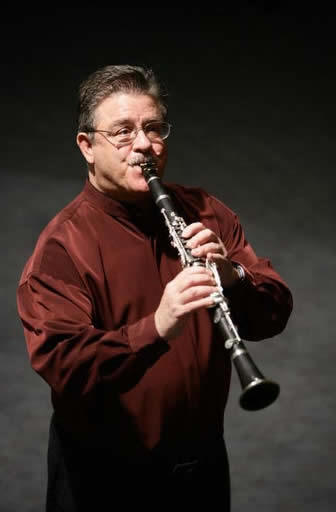
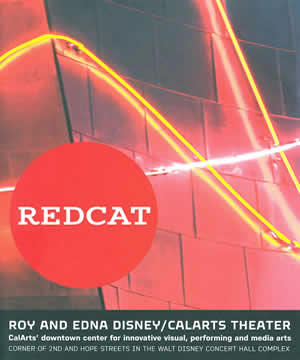
14 March 2006
An evening of Contemporary Music with
William Powell and friends
REDCAT Theater - Walt Disney Concert Hall
Los Angeles, California USA
This program of contemporary works with a number of premieres showcases the
wealth of new music for
clarinet and varied
combinations of instruments and venues. The program was well received and
the performance
was stellar in its
programming and delivery. Below is specific information about each work
performed and background
of the composers and
players.
performers:
William Powell, clarinet, Lorna Eder, piano, Mark Menzies, violin, Eric KM
Clark, violin, Nancy Uscher, viola
Erika Duke-Kirkpatrick, cello, David Johnson, conductor
The CalArts Percussion Quartet
Neili Sutker
John T. Wash IV
Joshua Tariff
Alan Goldenberg
Program:
James Tenney
Seegersong #1
(1999) for solo clarinet
Los Angeles
Premiere
Arturo Márquez
Zarabandeo
(1995) for clarinet and piano
Steven Hoey
Black Ice
(1999) for clarinet, violin and piano
Jane Brockman
Scenes from
Lemuria
(2006) for clarinet and string quartet
World Premiere
Olivier Greif
Ich ruf zu dir
(1999) for piano, clarinet and string quartet
I. Scream
II.
Roundabout
III. Ghost
IV. Sambor
American Premiere
Eugene Kurtz
Logo I
(1979) for clarinet, piano and percussion quartet
I.
Introduction
II.
Breakdown
Los Angeles
Premiere
About the Music -
Program Notes and Composers' Biographies
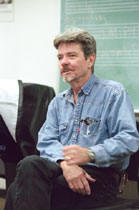
James Tenney
Seegersong #1
(1999) for solo clarinet
Los
Angeles Premiere
Seegersong #1
is one of a set of pieces for various melodic instruments, inspired by the
notion of a
dissonant counterpoint (defined in such a way as to be applicable
even to a single melodic line) as
advocated by Charles Seeger and exemplified in
the works of Carl Ruggles and Ruth Crawford Seeger.
Commissioned by Michele Verheul with the assistance of the Ontario Arts Council.
James Tenney was born in 1934 in Silver City, New Mexico, and grew up in
Arizona and Colorado,
where he received his early training as a pianist and
composer. He attended the University of Denver, the
Juilliard School of Music,
Bennington College, and the University of Illinois. His teachers and mentors
have included Eduard Steuermann, Chou Wen-Chung, Lionel Nowak, Carl Ruggles,
Lejaren Hiller,
Kenneth Gaburo, Edgard Varèse Harry Partch, and John Cage.
A performer as well as a composer and theorist, he was co-founder and
conductor of the Tone
Roads Chamber Ensemble in New York City (196370). He was
a pioneer in the field of electronic
and computer music, working with Max
Mathews and others at the Bell Telephone Laboratories in the
early 1960s to
develop programs for computer sound-generation and composition. He has written
works for a variety of media, both instrumental and electronic, many of them
using alternative tuning
systems. He is the author of several articles on
musical acoustics, computer music, and musical form
and perception, as well as
two books: META / HODOS: A Phenomenology of 20th-Century Musical
Materials and an Approach to the Study of Form (1961; Frog Peak, 1988) and A
History of Consonance
and Dissonance (Excelsior, 1988).
He has received grants and awards from the National Science Foundation,
the National Endowment for
the Arts, the Ontario Arts Council, the Canada
Council, the American Academy and Institute of Arts and
Letters, the Fromm
Foundation, the Deutscher Akademischer Austauschdienst, and the Jean A. Chalmers
Foundation. He has taught at the Polytechnic Institute of Brooklyn, the
University of California, and at
York University in Toronto, where he was named
Distinguished Research Professor in 1994. He now
holds the Roy E. Disney Family
Chair in Musical Composition at the California Institute of the Arts.
His music
is published by Sonic Art Editions and the Canadian Music Centre, and is
distributed by
them and by Frog Peak. Recordings are available from Artifact, col legno, CRI, Hat[now]ART, Koch
International, Mode, Musicworks, New World,
Nexus, oodiscs, SYR and Toshiba EMI, among others.
The Bavarian Broadcasting
Company has commissioned a new work for orchestra to be premièred by the
Symphonieorchester des Bayerischen Rundfunks in 2007.
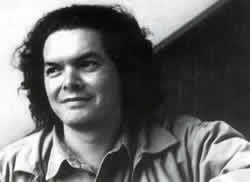
Arturo Márquez
Zarabandeo
(1995) for clarinet and piano
Composed in 1995, the Zarabandeo for clarinet and piano was
commissioned by the Director of
Music Activities of UNAM, and was first
performed by pianist Joseph Olechovsky and clarinetist Luis
Humberto Ramos to
whom I have dedicated the piece. The Zarabanda (Sarabande) was a popular dance
of unknown origin. There are records of this dance being performed in Mexico
during the second half
of the sixteenth century. During this same period, the
dance was condemned and its performance was
prohibited in Spain. In the next
century, the Sarabande reappeared as part of the Baroque instrumental
suite
form, but in a character very different from the original. These concepts were
introduced to
me by the Cuban musicologist Rolando Perez. I have no idea how the
original Zarabanda sounded, but
I feel certain that its prohibition came about
due to the fact that it was a very sensual dance. I am fascinated
with how the Sarabande we know now could be related to the Zarabanda which has disappeared.
In my
Zarabandeo, I have incorporated a Tangueo and a Danzoneo, two of my
favorite dances, because
of the relationship between people, music and dance, and because I hoped to
write something for clarinet
and piano that might inflame the passions.
Arturo Márquez was born in Alamos, Sonora in 1950. Today, he is widely
recognized as the most
outstanding Mexican composer of his generation. He began
formal music studies in 1966 with Thomas
Rosseti and Eva McGowen in La Puente,
California. In 1969 and 1970 he was conductor of the Navojoa
Sonora Band. He
pursued further studies at the Conservatory of Music of Mexico; The Taller de
Composicion
of the Institute of Fine Arts of Mexico with Joaquin Guttierez Heras,
Hector Quintanar, Razi Pavsn and
Federico Ibarra; in Paris with Jacques Casterède and Ivo Malec; and at the California Institute of the Arts
with Morton Subotnick, Lucky Mosko, Mel Powell and James Newton.
He has received grants from the Institute of Fine Arts of Mexico, the
French Government, and the
Fulbright Foundation. He was part of the
interdisciplinary group MUSICA DE CAMERA with Angel
Cosmos and Juan Jose Diaz Infante. He is composer for Irene Martinezs modern dance troupe
MANDINGA. He
has received commissions from the OAS, Universidad Autonoma Metropolitana,
Universidad Nacional Autonoma de Mexico, Festival Cervantino, Festival del
Caribe, Festival de la
Cuidad de Mexico, and the Rockefeller Foundation. He has
taught at the National University of
Mexico Superior School of Music, and worked
for CENIDIM (National Center of Research,
Documentation and Information of
Mexican Music). In 1991, he received the composition scholarship
of the Consejo
Nacional para la Cultura y las Artes, and in 1994 he received a three year
scholarship
from the Sistema Nacional de Creadores. Besides the numerous performances of his
work in Mexico,
his music has been performed in Europe, Latin America and the United States.

Steven Hoey
Black Ice
(1999) for clarinet, violin and piano
Work on Black Ice began in January after returning from the winter
storms and dangerous black ice
on the roads of northern Illinois. The image of
the rural countryside covered with patches of snow and
hardened by bitter cold,
almost crystalline in its nighttime stillness, was with me as I wrote the
opening
section of the trio. Whispery, high harmonics in the violin and
enigmatic-sounding multiphonics in the
clarinet are used throughout the piece,
glistening and glinting like ice. Through-composed in five sections,
Black Ice
develops from a sense of shadowed repose to a highly energetic scherzo section
whose motivic
material is drawn freely from intervals of major and minor thirds. Jazz
influences can be felt from time
to
time as the piece moves into the much slower middle sections (marked dark,
spectral and drifting,
lyrical) quietly announced by rolled chords in the piano that hearken back to
the opening measures.
The
piece concludes with a return to the scherzo-caprice material of major/minor
thirds, and blindingly
fast
chromatic passage work by all three performers drives the work to its finale.
Steven Hoey
Black Ice
was premiered by William Powell and members of the Titan Trio on March 3, 1999
at
California State University, Fullerton.
Steven Hoey is an American composer who has been performed widely on the
west coast of the
States as well as New York City and France. A winner of the Dutilleux Prize for International Composition
for his solo piano work, Artifact
I, Hoey has written for a wide array of soloists and ensembles including
the
Ensemble Green, the California EAR Unit, The New Millennium Players, the New
Century Players as
well as faculty ensembles at the University of California at
San Diego. A founding member of the composer
consortia Different Trains in Los
Angeles and Auralia and CLOSE RANGE in San Diego, he is committed
to building
new audiences for contemporary music. His solo harp work Sudden Travel,
commissioned and
premiered by Susan Allen, has been selected for performance at
the 2006 World Harp Conference in San
Francisco. His solo oboe work m/ODE/s was
written for Jacqueline Leclair in 2005; and his orchestral
work m/ODE/s on Three
Ancient Greek Fragments was performed in April 2005 by the La Jolla Symphony
Orchestra. He was a Composition Fellow at the 2005 Wellesley Composers
Conference, where his chamber
work, a Seraphs Shadow for eleven players was
premiered. His new work, Sirens in December for soprano,
flute, and cello, will
be premiered in San Diego in April 2006. He is currently completing a commission
for
bassoon and harp for Julie Feves and Susan Allen, and a work for soprano and
cello for Scott Kluksdahl,
Professor of Cello at the University of South Florida, to be premiered in New
York City in 2007.
After completing his Masters degree at the California Institute of the
Arts, Hoey served as a faculty
member there two years before relocating in San
Diego to pursue his doctoral studies. Steven is working
on his PhD dissertation
in composition at the University of California at San Diego with Chinary Ung,
and is an Associate Instructor in Theory and Composition. He also holds degrees
from Harvard University
and Oxford University where he studied on a Marshall Scholarship.
On
March 1, 2006, the American Academy of Arts and Letters announced that Mr. Hoey
was
awarded a
prestigious Charles Ives Scholarship. The award will be presented at the
Academy's annual
Ceremonial in May.
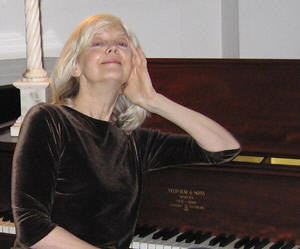
Jane
Brockman
Scenes from Lemuria
(2006) for clarinet and string quartet
World Premiere
Many years ago, Bill Powell gave me a recording of an amazing improvisation he
did, which he had
labeled, From Lemuria. Lemuria, I learned, was an
ancient mythical place which disappeared into the
sea much like Atlantis, but in Lemuria, the arts and creativity were the focus of civilization.
Bill's improvisation, done completely
extemporaneously, seemed to be pulling magic out of the ether.
That's really what composition (and perhaps all creativity) seems to be. We
study and theorize about much
preexisting music, but when composing becomes 'flow', it's almost as if one is
accessing information on
another plane. The music seems already to exist. (Which is not to imply that
there is no sweat.) And the
ability to access this plane seems to require various types of preparation.
Such was the process of this piece.
Thoughts of an ancient mythological civilization also brought
to mind music by another composer who resided in Los Angles, which I couldn't
resist paraphrasing
you'll know it when you hear it.
Jane Brockman
February, 2006
Raised in upstate New York, Jane Brockman is the first woman to have
earned a Doctorate in Music
Composition in the 150-year history of the
University of Michigan, Ann Arbor. She also studied in Paris with
Max Deutsch on
a Fulbright/Alliance Française fellowship and in Vienna on a Rackham Prize
fellowship.
She has been awarded honors and fellowships from the MacDowell
Colony (3 years), the State of Connecticut,
Meet the Composer, and the Composers
Conference (directed by Mario Davidovsky). Her first orchestra piece
won the Sigvald Thompson Prize for orchestral composition. Brockman's mentors include
Pulitzer Prize winners
Ross Lee Finney and Leslie Bassett, as well as George Balch Wilson, Wallace Berry and Eugene Kurtz. Brockman
taught music theory and
composition at the University of Connecticut for 9 years, where she founded the
University's Computer Music Studio and produced electronic music concerts. She
has also been on the faculties
of the Hartt School of Music, the University of
Rhode Island and the University of Michigan. She was one of
four composers
selected nationally for a Sundance Institute Film Composers' Lab fellowship,
working with
Henry Mancini, Bruce Broughton, Alan Sylvestri, David Newman and
the Utah Symphony.
Afterward, she left her tenured
professorship at the University of Connecticut to freelance as a
composer in the Los Angeles are, writing concert music and scoring low budget
films and television.
Today, in Santa Monica, her focus is entirely on concert music. That work
is informed by the diversity
of her experience with other media: dance, film,
and television, as well as the formal structure of academia.
Her music is
recorded on the Loenarda, Opus One, Coronet, Drimala and Capstone labels, and
published
by Arsis Press, Washington, D.C. and Diaphanous Music, which is
distributed by Theodore Front Music
Literature Inc. Her music has been in the
touring repertoires of Continuum and the New Music Consort in
NYC, and virtuoso
clarinetists F. Gerard Errante and William Powell.
She has served on the Boards of Directors of New York's Composers
Concordance, as well as Women
in Film, and the Society of Composers and
Lyricists in Los Angeles. She also served for three years on
review panels for
the National Endowment for the Arts, Washington, D.C. and produced concerts with
the
LoCal Composers Ensemble.
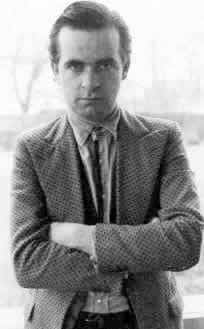
Olivier Greif
Ich
ruf zu dir
(1999) for piano, clarinet and string quartet
American Premiere
Ich ruf zu dir
is a suite of four movements, three of which (I, II and IV) are traversed by the
presence (more or less audible) of Martin Luther's chorale, Ich ruf zu dir,
Herr Jesu Christ (I call on you,
Lord
Jesus Christ).
The first movement "Scream" (in which
the theme of the chorale is more insinuated than actually
heard) is a meditation on nothingness. I wished to give the feeling of an ocean
of silence from which emerge
little by little always more vehement-sonorous elements stolen from the void, as
if gradually freed of its grip.
What is not heard matters as much as is possible that which is.
The music tries to say what is not possible to say that something
unnamable so dear to Paul Celan
an impression of fear such that it literally
loses its voice. The title of this movement is a direct allusion to the
painting
of Edvard Munch, The Scream.
The second movement
"Roundabout" of which the first motif is made up of four notes extracted
from
Luther's chorale. What's more, the entire theme of the chorale arises bit by bit
from the inexorable
progression of this movement, until it appears (almost triumphantly) near its
conclusion.
The third movement is a vision, a
hallucination I call it "Ghost" citing one of the last pieces
written by Mozart the Adagio for glass harmonica a bloodless, disincarnate
music from beyond the grave.
Finally, the fourth movement subtitled "Sambor" in reference to the
name of the area in eastern
Galacia where my father was born concludes the
work with a Chaconne followed by seven variations.
Recognizable as well as
Luther's chorale trying to reconstitute itself and reemerge are citations of
the Eighth Prelude (in e flat minor) BWV 853 from the First Book of Bach's
Well-Tempered Clavier and from
the Largo e mesto of Beethoven's Seventh Sonata,
Opus 10, No. 3.
Ich ruf zu dir was composed in November 1999. It is dedicated to
the memory of my father who
died during its composition and to Alice Ader and
her ensemble. It was played by them for the
first time during the Presences
festival, February 13, 2000, in the Olivier Messiaen auditorium of the
Radio France studios.
Olivier Greif
Olivier Greif was born in Paris and died there. As a student at the
Conservatoire National Supérieur
de Musique in Paris he was as brilliant as he
was precocious, obtaining first prize for chamber music
(Jean Hubeau),
composition (Tony Aubin) and orchestration (Marius Constant), and second prize
for piano
(Lucette Descaves). In 1969 he completed his studies in composition in
New York with Luciano Berio
(then
a teacher at the Juilliard School), subsequently becoming his assistant.
At this period he associated
with a
number of artists, among them Salvador Dali.
His double career as composer and pianist
led him to perform in many European countries, as well as
in the U.S. and in Japan.
During the 1970s, Olivier Greif taught composition, analysis and chamber
music at the Académie-Festival
des Arcs, which he directed from 1983 to 1986. In
1978 and 1979 he also taught at Annecy for the Pâques
Musicales. At the height
of this first part of his career, the Paris Opera and IRCAM commissioned the
chamber
opera Nô, premiered in 1981 at the Georges Pompidou Centre for the Paris
Autumn Festival.
In 1976, Olivier Greif embarked on a
spiritual quest which was to last more than twenty years. He
attached himself to an Indian guru living in New York, making frequent trips to
the United States and other
parts of the world as a consequence.
In 1978 he was given the name 'Haridas' ('servant of God' in Sanskrit).
This withdrawal into an inner life,
in response to a profound spiritual
aspiration, resulted in the suspension of his personal musical creativity
for
some 10 years, following the Sonate de Requiem, Le Livre du Pèlerin and the
opera Nô. During these
years he made numerous polyphonic arrangements of Indian devotional songs.
His musical career gradually resumed in the course of the 1990's, with
commissions from Radio
France and from various music festivals in France (La Prée, Deauville, Cordes-sur-Ciel) and abroad
(Kuhmo, Warsaw, Berlin), etc.,
reaching a peak at the time of his sudden death.
Spurred on by a sense of urgency, he produced a series of magnificent
works in the last months
of his life. Even without those that he was unable to
bring to completion (a symphony, a large-scale
Vêpres and other substantial
orchestral and choral works he had either been commissonned or had planned),
he
left a sufficient body of major compositions - from the Chants de l,Ame to the
Requiem - to satisfy the
most demanding and diverse criteria.
Olivier Greif wrote more than a hundred
works, dating back to 1961. As well as the recordings of
both composer and pianist currently available, a great many radio and other
recordings of concerts
and interviews bear witness to his achievements as a composer, his numerous
performances as a pianist,
and his profound and subtly caustic observations.
Though a French composer, he no doubt owed to his Polish and Jewish
origins a broader, more
fluid conception of his self and of his art. Everything
about Olivier Greif was exceptional. To the end, there
were still traces of the
child prodigy that he had once been. Every manifestation of homo musicus was so
natural to him that it verged on the supernatural. As well as being an inspired
and prolific composer, he was
a pianist of inexhaustible resources and an astounding sight-reader: a
visionary.
Yet, for this born musician, the mystical call of silence proved, during
long years, the strongest.
Composing, playing, meditating, writing hundreds of
pages of his private diary, apparently for him
involved the same activity of the
spirit. The musician, nonetheless, took the lead again, composing
powerful works
whose inspiration and titles are often tragic, haunted by the spectre of death.
Most of
them are, however, illuminated by the intuition ecstatic, incantatory
or hymn-like of a possible
sublimation; when it is not their vivid colour and
humour and furious rhythms that chase away black thoughts.
Though he received his musical training in
Paris, this Frenchman, whose family origins were in the
more culturally mixed regions of central Europe, early on felt 'foreign' in
relation to those qualities
considered typically French perfection, concision, restraint and likewise to
the prosody of his
native tongue. He felt more at ease with German and English, or even with Latin,
which he discovered late,
when writing one of his last compositions, the Requiem.
His music combines a profusion of original ideas and allusions, religious
(Hebrew or Gregorian chant,
Lutheran chorales, Anglican hymns) and secular
(melodies from every country and period), polyphonically
intermingled. Difficult
and complex, these scores demand a total commitment from their performers. The
piano was at first Olivier Greif's workshop: 'My thought was not only expressed
by the piano, it was
conceptualized by it' (Piano magazine, 1998); but, fundamentally eloquent, his
music often had recourse to
words, with a preference for English.
Olivier Greif's clearest affinities lie with Mahler, Britten and
Shostakovitch, but he never forgot
Beethoven, the 'creator' par excellence. His extraordinary instinct, coupled
with the perfect
technique acquired during his youth, enabled him to feel free from any
academicism, conservative or
avant-garde. What he sought was a total art form, at the crossroads of the past
and the future, the erudite
and the popular. He aspired to an authenticity of expression, independent of
every kind of aesthetic
trend or fashion.

Eugene Kurtz
Logo
I
(1979) for clarinet, piano and percussion quartet
Los
Angeles Premiere
According to most dictionaries, logo is an abbreviation of logogram and is
defined as a
character or symbol used to represent a word or phrase, as CBS, NBC, and ABC
represent the three
major
American television networks. Perhaps the best justification for the word as a
title for my piece
might
be the fact that each of the two movements, Introduction and Breakdown,
seemed to be
a sort
of logo in itself. Each one of them seemed to represent or characterize
precise and
perhaps contradictory ways of thinking at the time I was composing the piece.
The Introduction tries
on
occasion to recall certain nocturnal sounds that fascinated me when I was a
child and is in turn
meditative, poetic, and assertive. It advances in a somewhat discontinuous flow
in the form of a dialogue
that
is enriched with moments of silence and ever changing patterns of thought.
The Breakdown, which follows the first movement without pause, is in
complete opposition to
the Introduction. It is minimal as regards musical
material, obsessive in character, and inexorable as
regards rhythmic flow. The
principles of ostinato and repetition are exploited to the fullest, and both
of the instruments, especially the clarinet, seem to be caught up in a marathon
of notes that can end
only as abruptly as it began. The piano part alternates between diatonic and
chromatic clusters, and
the clarinet part might remind one of the riffs played by Benny Goodman in some
of his recordings
from the 1930s and 1940s. The title, Breakdown, comes from an obscure and
supposedly frenetic
African American dance of the nineteenth century. Nothing remains of the dance
but its name, so I felt
completely free to deal with the rhythmic element according to my own fancy.
Eugene Kurtz
Eugene Kurtz (b. 1923) is an American composer who has made his home in
Paris, France, for many years.
He studied there with Arthur Honegger, Darius
Milhaud and Max Deutsch and has since returned to the
United
States on different occasions to teach at The University of Michigan, The
Eastman School of Music,
The
University of Illinois and The University of Texas. In Paris, Mr. Kurtz has
written music for the theatre,
radio,
television and the cinema. His works for orchestra and chamber ensembles have
been widely performed
both
in the U.S. and in Europe. He has received commissions from The Musical Arts
Association of Cleveland,
Radio
France and the French Ministry of Cultural Affairs. Radio France honored Kurtz
on October 27, 1979,
with
Eugene Kurtz Day, for which he selected two programs of music chamber and
symphonic
of
past and present composers who are important to him and also included three
works of his own. In 1983,
Mr.
Kurtz was awarded a National Endowment for the Arts Fellowship Grant.
About the Performers -
Biographies

Clarinetist
William Powell received the Artist Diploma from the Juilliard School and a
master's degree
from California Institute of the Arts. In 1993-94 Powell lived
in India on a Senior Research Grant from the J.
William Fulbright Commission.
Under the auspices of Brhaddhvani Research and Training Centre for Music
of the
World, he presented concerts of American music throughout India, collaborated in
cross-cultural
performances with clarinetists A.K.C. Natarajan and Narasinhalu
Wadavati, and recorded for All India Radio
with Indian pianist Handel Manuel.
Powell has commissioned many new works for clarinet and has
premiered
over 300 compositions. He has performed at major concert venues throughout the
U.S., Europe
and Asia including Avery Fischer Concert Hall; Merkin and Carnegie
Halls; Dag Hammarskjold Auditorium
at the United Nations in New York; the
Kennedy Center in Washington, D.C.; the North American New Music
Festival as
soloist with the Buffalo Philharmonic; and at the International Congresses on
Women in Music in
Los Angeles, New York, Paris and Bremen. He has performed with
the Aspen Festival and Chamber Orchestra,
the contemporary music ensemble Sonor,
the Sierra Wind Quintet, the Naumburg Award-winning Aulos Wind
Quintet and, as
principal clarinetist with the San Diego Chamber Orchestra, the Las Vegas
Symphony and the
Reno Philharmonic. Powell has served on the faculties of UC and
CSU in San Diego; CSU, Long Beach;
and the University of Nevada, Las Vegas. He
has recorded for Cambria, CRI, Electra/Asylum, Nonesuch,
Nine Winds and Innova.
For more information about William Powell, visit his website:
http://www.williamepowell.com/
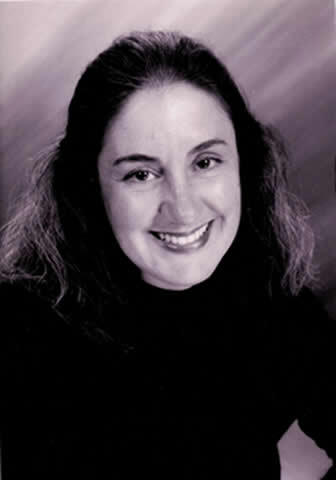
Pianist Lorna Eder received a Bachelor of Music from Washington State University
and a
Master of Fine Arts from California Institute of the Arts. Her teachers
were Istvan Nadas, Bruno
Seidlhofer and Leonid Hambro. Ms. Eder has worked as
staff accompanist at CalArts and College
of the Canyons, and was piano faculty
at the California State Summer School for the Arts. She is
currently a faculty
member at CalArts and is a member of the California Music Teachers Association.
An
accomplished accompanist, Ms. Eder performs chamber music with the finest
artists in
the Los Angeles area. She is an active performer of contemporary
music and was a member of
the California E.A.R. Unit for many years. She has
worked with composers such as John Cage,
Louis Andriessen, Morton Subotnick,
Elliott Carter, Stephen L. Mosko and Mel Powell.
Recordings with the E.A.R.
Unit include Zilver, works by Louis Andriessen, and Indigenous Music,
works by
Stephen Lucky Mosko. Her most recent CD appearance is on Five Decades of
Music,
works by Mel Powell.
Residing in
the United States since 1991, Violinist Mark Menzies has established an
important,
world-wide
reputation as a new music violist and violinist. He has been described in a Los
Angeles
Times review, as an
'extraordinary musician' and a 'riveting violinist.' At 35 years, his career as
a viola
and violin virtuoso,
chamber musician and advocate of contemporary music, has seen performances
in Great Britain,
Germany, France, Austria, Brazil, Mexico, Japan, New Zealand and across the
United
States, including a
series of appearances at New York's Carnegie Hall.
Mark
Menzies made his concerto debut with the New Zealand Symphony Orchestra with an
invitation
from Mstislav Rostropovich to perform at the opening of the 1988
International Festival of the Arts, in
Wellington, New Zealand. The performance,
conducted by Maxim Shostakovich, received rave reviews.
Mark Menzies' solo
career has continued to fulfill this auspicious beginning with critically
praised concerto
and solo recital
performances across the globe.
While
pursuing post-graduate studies in London, he formed the Salomon Ensemble with
Danish conductor Thomas Dausgaard, and was the ensemble's Artistic Director and
concertmaster.
The Salomon Ensemble's CD recording of the complete string works
of Edvard Grieg was
nominated for the equivalent of a Grammy in Denmark. A large
part of the ensemble's commitment
was to the performance of contemporary music,
and this saw Mark Menzies give the world premiere
of his commissioned
transcription of Paul Patterson's Harmonica concerto as well as the British
premiere
of the Schnittke Sonata for violin solo, harpsichord and strings.
Mark
Menzies is renowned for performing some of the most complex scores so far
written and
he has been personally recommended by composers such as Brian Ferneyhough, Roger Reynolds,
Michael Finnissy, Vinko Globokar, Philippe Manoury,
Elliott Carter, Liza Lim, Christian Wolff,
Richard Barrett and Sofia Gubaidulina
for performances he has given of their music. An early
success was performing at
the Lutoslawksi Festival in London (1989) and subsequent highlights have
included appearances at the Ojai Festival 2000, at the June in Buffalo 1996/9
and 2000 festivals, the
Mirror of the New Festival in Hawai'i
1997, and as featured guest soloist in the 09/03 International
Festival (of new
music) in Auckland, New Zealand, 2003.
There has
been considerable international critical applause for Mark Menzies' leadership
in e
nsembles formed to perform contemporary and twentieth century, such as the
Bloomington-based New
Vienna Ensemble, Los Angeles's Southwest Chamber Music,
San Diego's Sirius Ensemble and the New
York-based Ensemble Sospeso. It was with
Ensemble Sospeso that he organized a joint venture with
the California Institute
of the Arts to present the first professional concerts in the US dedicated to
Brian Ferneyhough's music in December 2002. At present, Mark Menzies is in the
process of initiating
a new collective ensemble based in Los Angeles, called Inauthentica.
Mark
Menzies is featured on a large number of CD recordings. This includes Process
and Passion,
a Pogus label release of chamber music by Roger Reynolds, as
well as the world premiere recording of
...above earth's shadow by
Michael Finnissy to be released shortly. Mark Menzies is a National
Recording Artist of
Radio New Zealand for whom he has made numerous studio recordings.
Mark
Menzies is currently viola and violin professor at the California Institute of
the Arts where he
also teaches chamber music. Drawing from his innovative
professionalism and artistic leadership, he
initiated a successful collaborative
series called Chamber Music Wednesdays that has contributed
to the programming
content of concerts presented by CalArts at their new theatre REDCAT at
the Walt
Disney Concert Hall. He currently curates a series called Classics at CalArts, a
fall festival
presented annually
at the Valencia campus.

Eric
Kenneth Malcolm Clark is a composer and violinist from Victoria, BC, Canada.
Eric is
currently completing the performer/composer MFA at the California
Institute of the Arts, where
he is studying violin with Mark Menzies and
composition with James Tenney. Compositionally, his work
explores disordering
methods and the use of hearing-deprivation as a medium for creating complexity
out
of supposed simplicity. As a performer, Eric enjoys free improvisation along
with new music, and is
interested in interpreting most any form of music. He has
performed new music throughout Canada, the
US, and Australia, most recently with
the experimental jazz trio Misinterprotato at the Woodford Folk
Festival in
Brisbane, Australia; in the obscurity festivette in Toronto; in New York City
with his trio
Fragments; and in the Creative Music Festival at RedCat in LA.
Eric has attended residencies as a
performer and/or composer at the Bang on a
Can Summer Institute (2004 and 2005); the Banff Arts
Centre (2005); the Atlantic
Center for the Arts (2004); and ARRAYMUSIC (2003).
Nancy
Uscher, Provost, violist and faculty member in the School of Music at the
California Institute
of the Arts, has appeared in recital on six continents and
recorded for a number of the major radio
networks of Europe. For five seasons
she led the viola section of the Jerusalem Symphony Orchestra.
Ms. Uscher has
appeared at the Casals Festival in Puerto Rico, Kennedy Center Mozart Festival,
Grand Teton Music Festival, Round Top Festival in Texas, Venice Biennale, Montepulciano Festival,
Spoleto Festival of Two Worlds in Italy, and the Moab
Music Festival in Utah. In addition, she has
performed and presented master
classes at the Brazilian international festivals Oficina de Musica XIV
in Curitiba and Campos do Jordao's Festival de Inverno. She has been corresponding
editor of Strings
magazine and is the author of two books, The Schirmer Guide
to Schools of Music and Conservatories
Throughout the World and Your Own
Way in Music: A Career and Resource Guide.
Nancy
Uscher has previously been Professor of Music and Associate Provost for Academic
Affairs
at The University of New Mexico. In addition, she was the Director of
the UNM Center for the Arts in
Society, a unit of
the Institute of Public Law that explores arts-related public policy issues. In
viewing
art as an agent for
social change, she has created an Arts-in-Prisons concert series and the
National
Endowment for the
Humanities-funded project "A New Mexico Conversation: Music as a Symbol of
American Pluralism
and Identity."
Ms.
Uscher received a Ph.D. from New York University in 1980. She was awarded a
Masters
of Music degree from the State University of New York at Stony Brook in
1974 and received a
Bachelorís Degree in Music from the Eastman School of Music
at the University of Rochester in
1972. During 1998-1999 Uscher was a fellow of
the American Council on Education at Brown University.

Cellist Erika Duke-Kirkpatrick is an active soloist, chamber musician and
specialist in contemporary
music. She has performed world and local premieres of
solo and chamber works throughout the U.S.
and Europe including the Los Angeles
Olympic Festival, the Computer Music Festival in Zurich, the Ars
Electronica
Festival in Linz and the San Francisco Symphony New and Unusual Music series.
She recently
recorded Elliott Carter's Enchanted Preludes, a work written for
her and flutist Dorothy Stone. She has
toured with Joan LaBarbara and Morton
Subotnick since 1981. Jacob's Room, on Wergo Records,
marks her fourth
appearance in recordings of Mr. Subotnick's music. She is a founding member of
the
California E.A.R. Unit, a Los Angeles-based new music ensemble, with whom
she tours throughout the
U.S. and Europe. She has also given master classes and
recitals under the auspices of the U.S.I.A.
Arts America Program in Central and
South America. A native of Los Angeles, her principal studies
were with Cesare
Pascarella and she has been coached by Mischa Schneider, William Pleeth and
Pierre Fournier.

Conductor David
Johnson plays vibraphone, marimba and percussion regularly with the Vinny
Golia
Large Ensemble, the Kim Richmond Jazz Orchestra, the World At Peace with
Yusef Lateef, pianist Roger
Williams, Dual Force, the CalArts New Century
Players and XTET. He has worked with a wide range of
artists including Dave Brubeck, Mel Torme, Maureen McGovern, Green Day, Pierre Boulez, Dean Drummond,
Stephen Hartke, George Benjamin and Mauricio Kagel.
Johnson has
played in the percussion sections of the Los Angeles Philharmonic, the Long
Beach
Symphony, the Santa Barbara Symphony, the Cabrillo Festival, the Ojai
Festival, the Berkshire Music
Festival at Tanglewood and occasionally in the Los
Angeles television and film industry. He has
performed with the California E.A.R.
Unit, the Southwest Chamber Music Society, the Independent
Composers
Association, Composers Inc., Pacific Serenade and the Philharmonic New Music
Group.
From 1974 to 1977 he was in residence at Northern Illinois University
with the historic Blackearth
Percussion Group. He has recorded for CRI, Opus
One, Delos International, Nine Winds, Seabreeze,
K2B2, Jazz Harp, Meta YAL,
Warner Brothers and New World. He was the winner of the 1995 Percussive
Arts
Society composition competition with his piece Quartz City for vibraphone
soloist and percussion
quintet. He was a featured artist/clinician at the 1997
Percussive Arts Society International Convention
in Anaheim California. He has
been teaching at the CalArts since 1990.
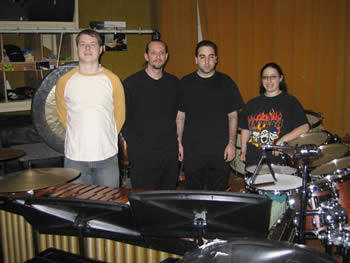
The CalArts
Percussion Quartet
Alan Goldenberg
Neili Sutker
Johsua Tariff
John T. Wash IV
Alan Goldenberg
is a third year BFA student in Multi-Focus Percussion at Cal Arts. He was
born in
Berkeley, California
and started percussion studies with his fifth grade music teacher Leonora
Gillard.
He has been playing
percussion for ten years.
Neili Sutker
is a 3rd year Bachelors student at CalArts where she studies Multi-Focus
Percussion.
She grew up in the San Fernando Valley and began playing percussion
in her high school marching band
after playing the flute and piccolo for 6
years. Neili transfered to CalArts from Los Angeles Pierce College,
where she
studied Percussion Performance and toured parts of the world with the Los
Angeles Pierce
Symphonic Winds. Neili's
ambitions include touring the world and performing/composing pieces that
compare different
musical techniques and structures from around the world.
Joshua Tariff
has been a percussionist since age 11. Growing up in Massachusetts, Josh was
selected
to play in numerous ensembles throughout the New England Area through
high school, including performing
in the National Band and Orchestra festival at
Carnegie Hall in 1998 and again in 2000. Josh then continued
to perform and
teach in various ensembles, music festivals, and clinics all around the country
as well as
Canada. In 2003, Josh performed at the Percussive Arts Society
International Convention in Columbus Ohio.
In 2005, Josh received his Bachelor
of Music degree from the University of Akron under the direction of Dr.
Larry
Snider. Besides participating in the symphonic band and orchestra at Akron,
Josh was also a member
of the Steel Drum band and the African Drumming
Ensemble. During his stay at the University of Akron,
Josh studied with and
performed alongside professional world musicians such as Matt Dudack, Tom
Miller,
Liam Teague, Bernard Woma and Michael Spiro among others. Josh has
premiered over 25 different works
for Band, Orchestra, Percussion Ensemble and
Percussion solo and this April he will be premiering two
works for solo steel
drum. Now at age 23, Josh is currently attending CalArts where he is in
the process
of completing his
Masters Degree in Multi-Focus Percussion.
John T. Wash IV
will be graduating from CalArts this spring with a BFA in multi-forcus
percussion.
He transferred from Long Beach City College to CalArts
in 2002. He works with various percussion
ensembles and bands
in the Los Angeles area. After graduation from Cal Arts, he will be going
on a U.S.
tour with The
Procrastinators Urban Percussion Trio.

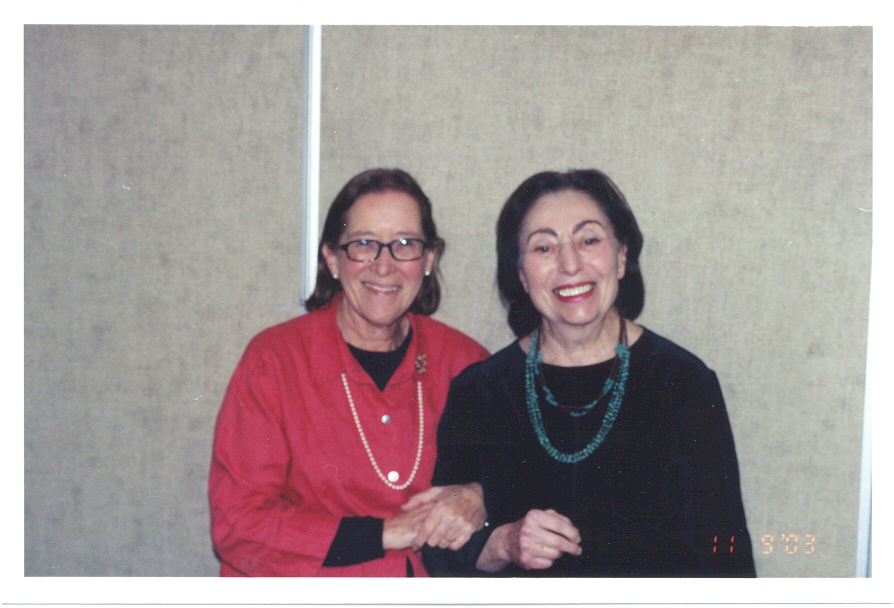
4 March 2006
American Chamber Ensemble Premiere of Joelle Wallach's After Alcyons Dream
for Clarinet, Viola, and Piano
Weill Recital Hall - New York City USA
This illustrious ensemble, led
by Directors Naomi Drucker and Blanche Abram, which performs annually here
at the
Carnegie Hall's Weill Recital Hall, offered an array of music of Long
Island composers, standard works and this new work
which is explained below.
Performance was before a sold out audience with a powerful display of artistic
accomplishment
with a 41 year track record of performances throughout the
New York City and Long Island areas. Program included
Irwin Swack Profiles for Violin, Clarinet, and Piano, Brahms Sonata #1 Op
38 for 'Cello and Piano, David Diamond
Quintet for Flute, Violin, Viola, 'Cello and Piano, and the
above new work.
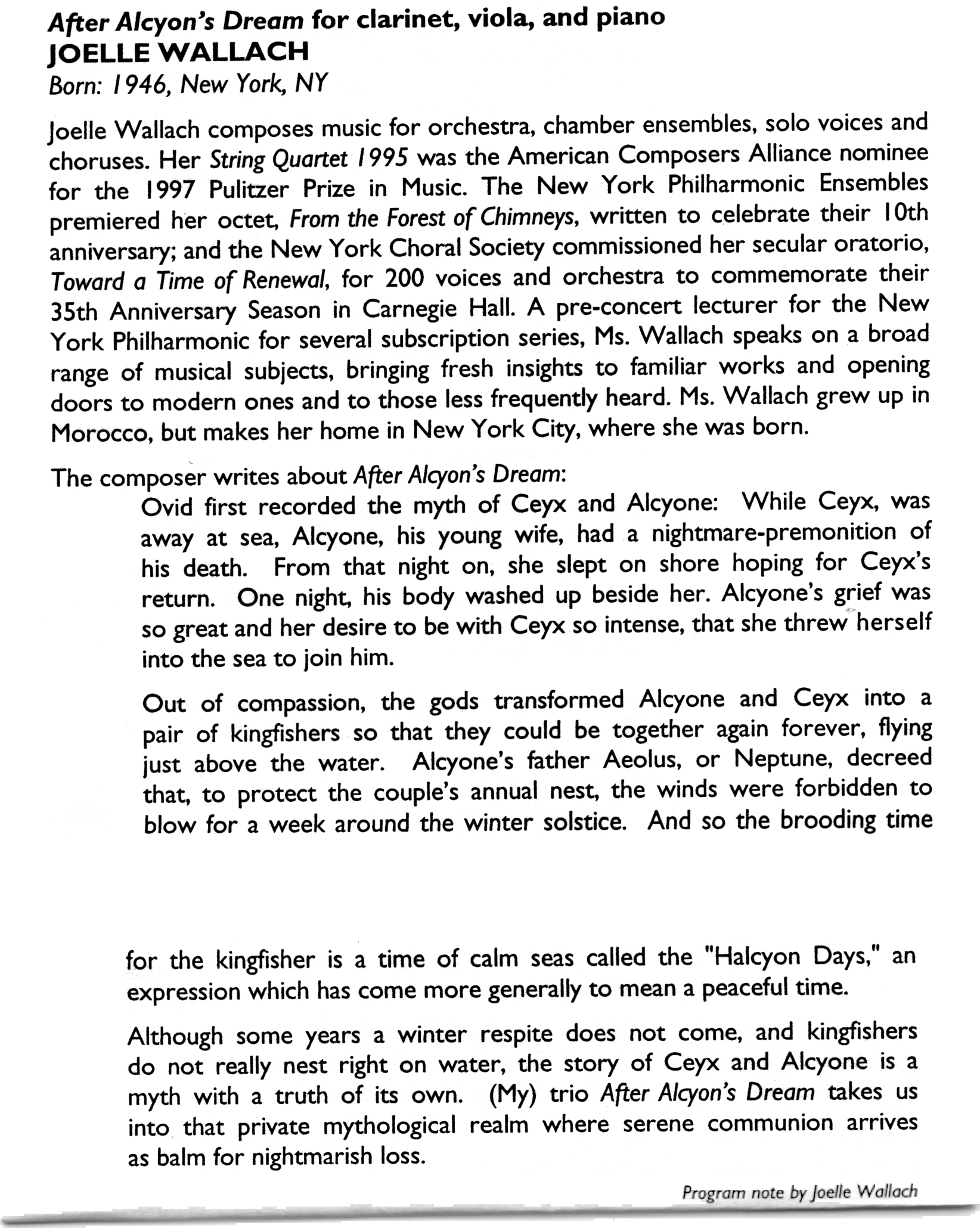
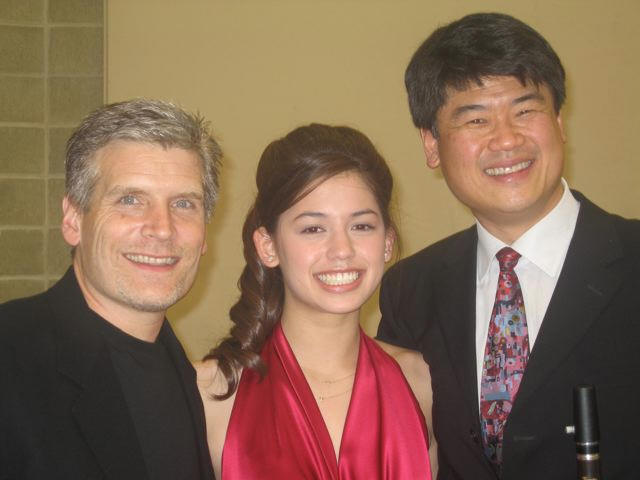
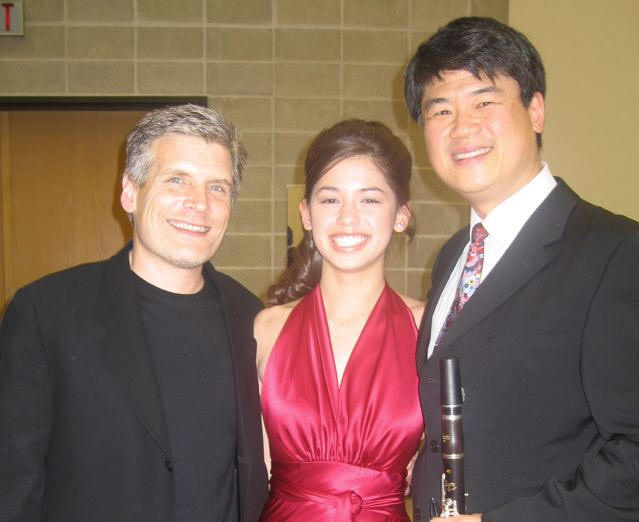
Michael Burritt, composer and Director of Winds, Brass, and Percussion at
Northwestern
University, with Molly Yeh and John Bruce Yeh
19 February 2005
Northshore Concert Band
Performance
Evanston, Illinois, USA
Concert Preview
Evanston Review, Thursday, February 16, 2006
Father and daughter play world
premiere
BY DOROTHY ANDRIES
CLASSICAL MUSIC CRITIC
Clarinet and percussion --
it's not a combination of instruments heard often in classical pieces.
So when the idea arose for a
duet between Glenview resident John Bruce Yeh, the Chicago Symphony Orchestra's
assistant principal
clarinetist, and his daughter, award-winning percussionist
Molly Yeh, a new work had to be commissioned. The two Yehs will perform
with the Northshore Concert Band on Sunday, presenting the world premiere of Duo
Concertante for Clarinet and Percussion by Michael
Burritt of Gurnee, professor
of percussion at Northwestern University's School of Music.
The 12-minute piece was
co-commissioned by the band and Glenbrook South High School, where Molly is a
junior. "It's a huge honor
for us and it's a wonderful challenging piece," John
Bruce Yeh said last week, talking on his cell phone backstage during a CSO
intermission. "Molly has a
lot more notes than I do."
Indeed. The 16-year-old, who
is the recipient of the band's John P. Paynter scholarship, will be running back
and forth between a
concert-size marimba, four concert tom-toms and two bongos.
"It's very athletic for her," Yeh said, laughing.
The idea for the piece was
first mentioned in a casual conversation Yeh had with Molly's first percussion
teacher, Kathy Colson.
"We were both in the stands at a GBS football game more
than a year ago," he said. "Molly was in the marching band." Colson's
husband,
Roland, plays in the Northshore Concert Band, and Yeh had been a soloist with
the group twice, once with John Paynter
conducting and more recently under the
baton of current music director Mallory Thompson.
After Molly was named
scholarship winner, she and her father were invited to play with the band. "We
could have each done a
number, but I thought how nice if we could play a piece
together -- perhaps commission a piece," Yeh said. "Mrs. Colson said
that was a wonderful idea."
GBS band director Greg Wojcik
was consulted and the school agreed to co-commission the work with the band.
NU's Burritt was
well-known to both Yeh and his daughter. "Michael played one of
his own compositions with the Midwest Young Artists Symphony
Orchestra," Yeh
said. "Molly is in that orchestra and she knew his music." MYA, as the
Highwood-based ensemble center is known,
has been a crucial factor in
Molly's musical development, her father said.
And she agrees. She was a
member of the Rattan Trio, which won the Fischoff Competition in 2004, the first
percussionists to ever
to take first prize in that prestigious contest. "And the
year before that, we were the first percussionists to ever enter the
competition,"
Molly declared. "MYA is my home away from home," she continued.
"That's what got me really started in music. I didn't know where
I was going
with my percussion studies. I was ready to give it up, then Dad introduced me to MYA.
Now I definitely want to go into
music professionally."
'Circus' sounds
She is particularly
enthusiastic about Burritt's composition. "It sounds like a circus on steroids,"
she said, laughing. "My dad just walks
on stage with his clarinet.
It takes forever for my set up."
"There are a lot of
influences in my music, including jazz and contemporary," Burritt acknowledged.
"And I listen to pop music and play a
lot of classical, so this piece is a mix."
Putting clarinet and drums together is not such a radical idea, he insisted.
"Think about Gene
Krupa on drums and Benny
Goodman on clarinet in 'Sing, Sing, Sing,'" he said, citing the memorable
collaboration from the Swing Era.
"We'll have Molly drumming
away on the tom-toms and John's clarinet screaming above her. He's a world-class
musician and Molly is
so smart and such a good
player. It was very rewarding to write something for them."
For Yeh, a duo concerto with
his daughter will be special. "It's a great joy for Molly and me," he said, then
sounding very much like a
father, added, "a great
joy."
|
|
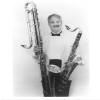
|
|
Dennis Smylie with Bass Clarinets
|
|

|
|
Colonial Symphony program
|
|

|
|
Review of Concert
|
|

|
|
Smylie with Clarinet and Bass Clarinet
|
|
|
28 January 2006
World Premiere of Fred Cohens Smiling Dennis for
Bass Clarinet & Strings with Colonial Symphony
Morristown, New Jersey, USA
The Colonial Symphony, conducted by Paul Hostetter, performed a varied program
including a new work
written by Fred Cohen with soloist Dennis Smylie,
renowned Bass Clarinetist for which this work Smiling Dennis
was written. A review of the concert and Fred
Cohens notes are posted above.
Dennis Smylie, a well established New Yorker, earned his Bachelor and Masters
Degrees from the Juilliard
School having studied with Joseph Allard. Other
teachers have included Alfred Zetzer, Stephen Freeman, Kalmon
Opperman, and Bill
Street. Mr Smylie is a member of the American Symphony, the Brooklyn
Philharmonic, and has
performed with the New York Philharmonic, The Metropolitan
Opera Orchestra, the New York City Ballet and Opera
Orchestras. The Buffalo
Philharmonic, the Orpheus Chamber Orchestra, the Chamber Music Society at
Lincoln Center,
the St Louis and Montreal Symphonies, and Speculum Musicae. Mr
Smylie was soloist in the world premiere of
Donald Martinos Triple Clarinet
Concerto. Recitals include appearances at Juilliard, Oberlin, Yale, Princeton,
Kent State University, Florida State University, and the University of
Washington at Seattle. He has recorded for
labels such as Deutsche Grammophone,
Nonesuch, New World Records, CRI, RCA, and Virgin Classics. He serves
on the faculty at the Aspen Music Festival each summer
in Colorado.
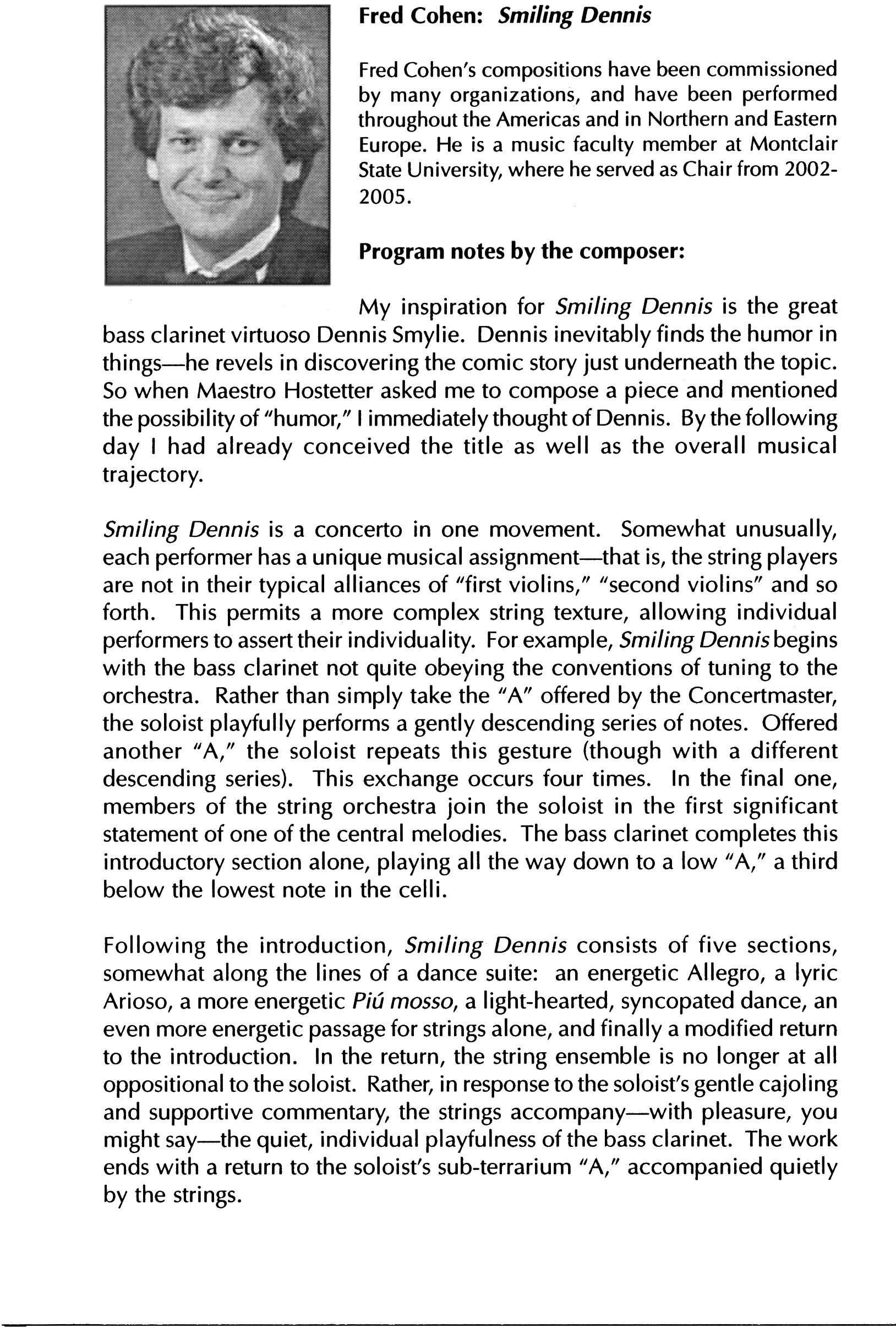
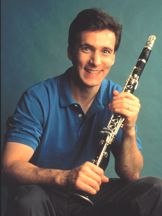
8
January 2006
National Philharmonic Chamber Orchestra
Steven Gerber Clarinet Concerto Premiere with Jon Manasse
New York
City USA
In presiding over the world premiere of Steven
Gerber's new Clarinet Concerto at Rockville's F. Scott Fitzgerald Theatre
on
Saturday, Piotr Gajewski and his National Philharmonic Chamber Orchestra have
participated in an important musical
event.
Written for Jon Manasse, who is the principal clarinetist of the Metropolitan
Opera Orchestra and the evening's
soloist,
the concerto is the work of a composer whose idiom is a coherent and logical
amalgam of centuries of musical thought.
Its
opening thematic material, angular but immediately memorable, serves as a
structural element when it reappears in each
of the two
movements. The character of the solo line and its textural orchestral support
evolve easily from sharply defined
and
disconnected points of sound to passages of easy lyricism, and all of this
develops naturally and without any sense of
gimmick or
premeditation.
Most
compelling, however, is Gerber's orchestration. Within the context of a spare
pizzicato texture, he has the harp, in
its lowest
and most sonorous range, functioning as almost a second solo instrument. There
are times when the solo clarinet
line is
answered by the clarinet from the orchestra rather than by an expected
contrasting timbre, and the development
of the
second movement's fugue theme in the low woodwinds is delightful.
Manasse
gave this fine new work the wonderfully straightforward and assured reading it
deserved, and Gajewski and
the
orchestra supported him admirably.
The rest
of the program included a cheerful and incisive performance of the Grieg "Holberg"
Suite and a perhaps
overly
careful reading of Haydn's "Farewell" Symphony No. 45, that saw (as tradition
dictated) the orchestra members
leave the
stage one by one (one oboist, with a cell phone glued to his ear) as the last
movement dribbled to a close,
leaving
the conductor to drag two violinists back to finish the last phrase.
-- Joan
Reinthaler
"Steven R. Gerber has one of
the most direct and readily accessible voices in contemporary American
music...Gerber's urgent, highly charged language arouses graphic
emotions, even at first hearing." (Amazon Rough Guides/online)
"...an important addition to music in the late 20th century, its sense
of evolution from previous generations welcome at a time when change
seems to have become a virtue in istelf." (Fanfare)
 Steven R. Gerber
was born in 1948 in Washington, D.C. and now lives in New York City. He
received degrees from Haverford College and from Princeton University,
where he received a 4-year fellowship. His composition teachers included
Robert Parris, J. K. Randall, Earl Kim, and Milton Babbitt. Steven R. Gerber
was born in 1948 in Washington, D.C. and now lives in New York City. He
received degrees from Haverford College and from Princeton University,
where he received a 4-year fellowship. His composition teachers included
Robert Parris, J. K. Randall, Earl Kim, and Milton Babbitt.
Two CDs of Gerber's orchestral works were released on major labels in
2000. Chandos issued his Symphony No. 1, Dirge and Awakening, Viola
Concerto, and Triple Overture, played by the Russian Philharmonic
Orchestra under Thomas Sanderling, with Lars Anders Tomter, viola, and
the Bekova Sisters Trio. [CD
details] KOCH International Classics, under a grant from the Aaron
Copland Fund for Music, released his Violin Concerto, Cello Concerto,
and Serenade for String Orchestra, played by the National Chamber
Orchestra under Piotr Gajewski, with soloists Kurt Nikkanen and Carter
Brey. [CD details]
After the American premiere of his Violin Concerto at the Concert Hall
of the John F. Kennedy Center for the Performing Arts in 1995 by
Nikkanen and the National Chamber Orchestra under Gajewski, the
Washington Post called it "a major addition to the contemporary violin
repertoire: lyrical, passionate, beautifully tailored to the
instrument's character and capabilities...Gerber has revived the spirit
of romanticism in this work, with a strong sense of tonal melody and of
the dramatic effects and surprises still possible in traditional
forms...one of the year's most memorable events." And when Carter Brey
premiered his Cello Concerto with the same orchestra and conductor in
1996, the Washington Post said, "Gerber's concerto seems to have what it
takes to establish a foothold.... The music is composed with a fine
sense of instrumental color.... Gerber has given his soloist some fine,
expressive melodies."
Recent works of Gerber's include a Viola Concerto written for Yuri
Bashmet and premiered by Bashmet at his summer festival in Tours,
France; String Quartets No. 4 and 5, written respectively for the Fine
Arts and Amernet String Quartets; "Spirituals" for clarinet and string
quartet, commissioned by Concertante Chamber Players for performances in
2000 at the Library of Congress and Merkin Hall (NYC) and in Harrisburg;
a Clarinet Concerto for Jon Manasse, premiered by him with the National
Philharmonic Orchestra under Maestro Piotr Gajewski, and "Fanfare for
the Voice of A-M-E-R-I-C-A," commissioned to celebrate
VOA's 60th anniversary, and premiered at the VOA auditorium on a 9/11
memorial concert in 2003. The Fanfare has since then been performed by
the Wheeling Symphony, the Omaha Symphony, the University of Tennessee
(Knoxville) Orchestra, and by the National Philharmonic Orchestra at the
new Music Center at Strathmore as part of the 2005 ASOL convention.
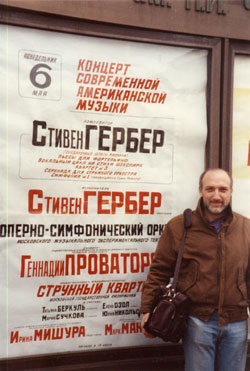 Gerber's
music is well-known also in Russia and Ukraine, where he has had
numerous tours with literally dozens of performances of his orchestral
works as well as many concerts of his solo and chamber works. Several of
his major works were given their world premieres there, including "Dirge
and Awakening" by the Russian National Orchestra under Mikhail Pletnev
at the Great Hall of the Moscow Conservatory, Violin Concerto by the
Novosibirsk Philharmonic under Arnold Katz, with soloist Kurt Nikkanen,
and Serenade Concertante by Chamber Orchestra Kremlin under Misha
Rachlevsky at the Small Hall of the Moscow Conservatory. Gerber has
written several works for famed Russian violinist Tatyana Grindenko. Gerber's
music is well-known also in Russia and Ukraine, where he has had
numerous tours with literally dozens of performances of his orchestral
works as well as many concerts of his solo and chamber works. Several of
his major works were given their world premieres there, including "Dirge
and Awakening" by the Russian National Orchestra under Mikhail Pletnev
at the Great Hall of the Moscow Conservatory, Violin Concerto by the
Novosibirsk Philharmonic under Arnold Katz, with soloist Kurt Nikkanen,
and Serenade Concertante by Chamber Orchestra Kremlin under Misha
Rachlevsky at the Small Hall of the Moscow Conservatory. Gerber has
written several works for famed Russian violinist Tatyana Grindenko.
Current projects include a new orchestral work for Maestro Vladimir
Ashkenazy and a commission from The Lark Ascending for a new work for
woodwinds. In spring, 2006 KOCH International will issue a new CD of
nine of his solo and chamber works, spanning the period 1967-2001, all
performed by violinist Kurt Nikkanen, along with violinists Cho-Liang
Lin and Cyrus Beroukhim, cellist Brinton Smith, and pianist Sara Davis
Buechner.
|
|
|
|

|
|
Verdehrs in Mill's Double Concerto with Michigan State Chamber Orchestra
|
|

|
|
Concerto conclusion
|
|

|
|
Verdehr Trio
|
|

|
|
Trio in performance
|
|

|
|
Trio in world premiere
|
|
|
10 October 2005
Michigan State University Clarinet Spectacular Jazz
Meets Classic
Verdehr Trio Premieres
East Lansing, Michigan USA
During this weekend at this
major festival involving the many clarinetists and alumni of this great Clarinet
department at the School of Music, the acclaimed Verdehr
Trio, famous for its virtuosity and proactive support of
this repertoire for Violin, Clarinet and Piano,
performed 3 premieres, to be explained below.
The Michigan State Chamber
Orchestra, under conductor Leon Gregorian, performed with Elsa Ludwig-Verdehr
and Walter Verdehr the Richard Mills Double Concerto for Clarinet, Violin, and
Orchestra in its American premiere.
Mills is a major composer from Australia,
and also Music Director of the West Australian Opera. This work was written
for
the Verdehrs in recognition of their artistry and commitment to the creation of
new music. The duo is a continuous,
evolving story based on the opening bars-
the intervals of the violins music (inspired by the calls of the Australian
Magpie)
contrasting in tension with compressed 12 note scales for the clarinet.
Important contributions from the Orchestra are made
by the piano,percussion, and harp but the essential
musical argument is concentrated in the violin and clarinet gestures who
explore the potentials of the opening music through a
multi-faceted interdependent relationship. The composer has been
inspired by the dramaturgy of classical forms and has
endeavored to incorporate the clarities and logic into his compositional
language. This concerto was world premiered in
Taiwan with the Taipei Symphony in June 2004 conducted by the composer.
The Verdehr Trio
performed at the Finale concert 2 world premieres for them, including Songs
(2004) by Akane
Tsuji-Nakanishi from Japan, this work consists of 12 Songs
inspired by Japanese haiku, Waska, and other poetry from
ancient times to the 20th Century. The 12
songs circle around the seasons and return to the first introduction of the next
springs sparkle. The violin, clarinet, piano
combination is perfect for this work; talkative without words, and dynamic
enough
to tell the story about the whole year.
Peter Dickinson, the 2nd
premiere work, Lullaby (2004), was an adaptation of a song written in 1967 for
an unfinished
opera, and became part of a cycle for soprano and brass
called the Unicorns, and evolving to this ensemble combination.
The Verdehr Trio performed
brilliantly on all 3 works performed these last 2 days. The current number of
works
commissioned exceed over 20 years of constant input into their
repertoire. The Verdehr Trio has several recordings
on Crystal Records. International tours are always in
focus, with future performances coming in Moscow, London,
Athens, and Vienna.
|
|

|
|
Thelema Trio with composers
|
|

|
|
Thelema Trio performing new works
|
|

|
|
Trio Performing new music
|
|

|
|
Composers at concert
|
|
|
13 October 2003
Ghent,
Belgium
Thelema Trio
premieres 2 new works
The young Belgian ensemble Thelema
Trio keeps working with composers and promoting new music. After their concert
debut in April 2003, they have
premiered a new composition every single concert.
Last concert the 13th of October
was no exception. Thelema Trio offered a 2 hours-plus evening at the Rode Pomp
Hall in
Gent, Belgium. Four composers
attended the performance of their works.
Philemon Mukarno
(Indonesia/Nederland) composed Ameleth for Thelema Trio and it was premiered
in March 2004.
This powerful piece is scored for
clarinet, contrabass clarinet, alto and baritone saxophone, piano and
synthesizer. Since
the day of the premiere, this piece
has been performed every month with much success.
Jalalu-Kalvert
Nelson (USA/Switzerland) worked with Thelema in May 2004 on his piece
Sight-seeing for clarinet,
contrabass clarinet, baritone saxophone and piano.
The first world
premiere was Ice Poems by the Icelandic artist Hallveig G. K. Ágústsdóttir.
This young artist
(also a clarinettist) has collaborated with Thelema since the
ensemble begun its career. Her work is scored for
bass clarinet, baritone
saxophone, piano, keyboard and percussion. The work is dedicated to Thelema and
it was
warmly received by the
audience.
From Denmark came
Thorkell Atlason to work with the trio. He composed Cross-fire especially for
Thelema,
inspired on a previous
visit to Belgium. The title makes reference to all the war monuments that are
found in Belgium.
The work is scored for
clarinet, alto saxophone and piano.
All these
compositions will be soon heard on a Peruvian tour the trio will start from 19th
October till 4 November.
Many works will be performed for the first time in
Peru, including the world premiere of Euryale by Finnish composer
Tomi Räisänen
and works of American composers Kevin Walczyk and Burton Beerman. Visit Thelemas
web site from
the title above this
article.
|
|

|
|
Tel Aviv Chamber Orchestra introduction
|
|

|
|
Mosaic for 3 Clarinets & Orchestra
|
|

|
|
Soloists Eddie Daniels, Giora Feidman, and Philippe Cuper
|
|

|
|
Soloists performance of Mosaic
|
|

|
|
Schlome Gronich, composer with soloists
|
|
|
29 August 2004
Tel Aviv Golda Mier Performing Arts Center Opera House
- Israel
Clarinet & Klezmer in the Galilee Music
Festival with Giora Feidman - Israel (August 2004)
World Premiere of Mosaic for 3 Clarinets and Orchestra
by Schlome Gronich
At the Finale Gala
concert of the Clarinet & Klezmer Music Festival in the Galilee, this new work
was performed by
the Tel Aviv Chamber Orchestra with special soloists Giora
Feidman (Klezmer), Philippe Cuper (Classic), and Eddie
Daniels (Jazz), written
specifically for this event, culminating the tri- fusion of the above styles.
Each performer, noted
for his musical acclaim was considered in the writing of
the work. Giora Feidman performed both on Clarinet and Bass
Clarinet. The work
was in three movements with elements and flexibility to accommodate all three
soloists. The thematic
simplicity of this piece opened opportunity to play
with this concerto to eachs advantage. This piece will surely be
performed as
often as this tri-combination can make it possible. Schlome Gronich is a well
known composer in Israel.
|
|

|
|
Thelema Trio
|
|

|
|
Trio in Premiere performance in Ghent, Belgium
|
|
|
23 May 2004
Ghent, Belgium
Thelema
Trio premiered new works of
Kevin Walczyk, Jalalu-Kalvert Nelson and
Ward
De Vleeschhouwer
The
Thelema Trio is a raising ensemble in the music world. In their young career
they are responsible for several world
premieres. Their unique instrumentation (clarinet, contrabass clarinet; alto,
tenor, baritone saxophones; piano and synthesizer)
and
high technical skills have inspired composers from all over the world.
This
concert took place Sunday 23 May in Gent, Belgium at the Bijloke small concert
hall. This event was attended by a full
audience.
American composer Jalalu-Kalvert Nelson is a former pupil of Yannis Xenaquis and
has also worked with John Cage. His
work entitled "Sight - Seeing" is scored for
clarinet in Bb, contrabass clarinet, bariton saxophone and piano. The composer
has worked directly with the Thelema Trio and he came specially to attend the
premiere from Switzerland, where he currently
lives.
Kevin Walcsyk sent
his work "Incantation" to Thelema Trio to has its European premiere. The work is
scored fo clarinet,
alto saxophone, piano and digital tape. This work
was very well received by the audience. Dr. Walczyk is currently Associate
Professor of music at Western Oregon University in Monmouth, Oregon where he
teaches electronic music, composition,
jazz arranging, film scoring, aural skills, and horn performance.
Finally, Ward De Vlesschhouwer "Dingle Way" was introduced to the audience. This
piece is also scored for clarinet,
alto saxophone and piano, ad it was inspired
to a trip he made to Scotland. Ward is the pianist of the Thelema Trio and
this
work is his first contribution to the ensemble's repertory. Together with the compostions of saxophonist Peter Verdonck,
Thelema Trio brings back the
tradition performer-composer into the classical world.
This
ensemble is probably the only one where the contrabass clarinet is used as a
solo voice, played by the Peruvian
clarinettist
Marco Antonio Mazzini.
|
|

|
|
American Symphonic Clarinet Choir
|
|

|
|
William Wright, Mike Kelly, and John Stephens
|
|

|
|
Choir in rehearsal
|
|

|
|
Wright rehearsal of solo parts of Teo Macero
|
|
|
9 May 2004
American Symphonic Clarinet Choir
Green Room at An
die Musik Baltimore, Maryland USA
This
quickly emerging professional ensemble performed a Baltimore concert with 2
premieres written for this
ensemble by 2 American composers, along with an
interesting array of other works and transcriptions covering a broad
historical
musical spectrum. The venue for this performance was a recital hall designed in
concept to support all musical
styles, including jazz, chamber music, and
recital. The ensemble was conducted by Dr John Stephens and former
National
Symphony (Washington, DC) Clarinetist (and principal clarinetist in this
ensemble) William Wright who was
soloist in the Teo Macero Ice Chips, a work
showing a structure well established in jazz elements but with solid
compositional techniques of our time. This piece has elements of improvisation
as well as avant-garde free-style
approaches. Its many approaches to the aspects
of jazz-classical fusion serves the work well for the Clarinet Choir
medium.
The composer Teo Masero, a composer and past Chief Recording Producer for
Columbia Records during
the prime days of Benny Goodman and Miles Davis and
responsible for the production of these great recordings,
The 2nd
Premiered work was written by Stephen Makofski named A Fraction Before for
Double Clarinet Quartet
with Narrator Ljiljana Jovanovic, which works in the
capacity of employing current contemporary compositional style.
Its content for
2 Clarinet Quartets with the infusion of Narrator reciting a text being abstract
and commemorate with
the instrumental components of the piece. The 2 Quartets
trade off between highly complex cells opposed to a quiet
section of quartet one
interspersed with the narrators text. Both premiered works reflected different
contemporary
approaches and flexibilities. Other works on the program included
works of Ravel, Rossini, JS Bach, Desire Dondeyne,
Robert Rodan, and Johann
Molter. The Concerto #3 was performed by soloist Ben Redwine. This
is one of the only
Professional ensembles of its kind in the United States.
|
|

|
|
Salander as Clarinet soloist with Moravian Philharmonic recording of Leo Kraft Clarinet Concerto
|
|

|
|
Recording Concerto with Joel Eric Suban, conductor
|
|

|
|
Moravian Philharmonic in Hall
|
|

|
|
Mr Salander and Conductor Mr Subec in conference
|
|
|
2 May 2004
Leo Kraft Clarinet
Concerto Recording Premiere
with Moravian
Philharmonic Roger Salander, Soloist
Olumouc, Czech
Republic
A new Clarinet Concerto Recording of the above work by American composer Leo
Kraft was performed with
noted American soloist Roger Salander who performs and
teaches in Vienna and directs the Chamber Music Festival
Heiligenkreuzen Herbst (Chamber Music Festival at Heiligenkreuzen
Monastery) - Austria
. Mr Kraft, well known in New
York and a past student of Karol Rathaus,
has written many diverse works for all combinations of instruments and
several
concertos. Several recordings, especially the CDs which he heard (Romantic
Vienna Live - the live concert
recording of the Frühling and Zemlinsky trios,
decided Mr Salander as choice for this concerto. Joel Eric Suben, an
American
conductor from New York who performs as a recording conductor and specialized in
New Music conducted
the project. Mr Salander is a highly recognized soloist
and has more pending concertos upcoming within months.
For Clarinetists, it
would be of interest that the clarinet used is a special design instrument
co-produced by Mr Salander
and the Austrian firm
Otmar Hammerschmidt. named
the RS Clarinet.
|
|

|
|
Sylvan Winds
|
|

|
|
Davide Zannoni - Italian composer
|
|
|
8 April 2004
The Renee
Weiler Concert Hall, Greenwich House
(Greenwich
Village)
New York City, USA
Cutting Edge Concert
Conceived and
Hosted by Victoria Bond
Fresh
Air
The
Sylvan Winds
The celebrated Sylvan
Winds
premièred Davide
Zannoni's work for
woodwind quintet,
Quattro Quadri
('Four Paintings'), for
Cutting
Edge
Concerts series.
Quattro Quadri
is a four movements work, inspired each by a 20th century painting:
1.
Piet Mondrian, Broadway Boogie Woogie
2. René Magritte, Le Chateau des Pyrénées
3.
Lucien Freud, Portrait of my Brother
4.
Edward Hopper, Nighthawks
The concert featured large reproductions of each work on stage during the
performance.
The concert program included new music for wind quintet by Judith Shatin, Jon
Deak, and Frank J. Oteri.
-------------------
Davide Zannoni
was born in Spoleto, Italy. He started his career as a jazz drummer,
subsequently joining the Maggio Fiorentino Orchestra, under the direction of
Zubin Mehta in Florence, Italy as a percussionist. He also received a Ph.D. in
Humanities from the University of Bologna.
After studying
composition and piano privately in Italy, he accepted a scholarship from Queens
College, where he studied with Thea Musgrave and received his M.A.
Davide Zannoni has written
numerous solo, vocal, chamber and orchestral
works. He has received
various commissions from different performers and
organizations such as the
New York Festival of Song, The Downtown Chamber Players, The Darkwood Consort,
Tetraktis Percussion Quartet, The Risorgimento Project, flutist Joanna
Goldstein, trumpet player Ivano Ascari, soprano Lynne Hayden Findlay,
percussionists James Preiss, Greg Giannascoli and Federico Poli, and pianist
Carlo Levi Minzi.
He has received
several grants and awards from The American Music Center, Meet the Composer, and
NYSCA. Some of his works have been recorded by
Federico Poli and Ivano Ascari on the CMT and AZ labels. His works have been
choreographed in Italy and the U.S. by such groups as Alvin Ailey Dance Theater,
and he wrote the music for "Where Did Forever Go", an award-winning documentary
film.
His music is
regularly performed in the U.S., Italy and abroad, most recently in Canada,
Israel, Brasil, Australia, Finland, Japan, Lithuania and England.
DAVIDE ZANNONI ON
HIS MUSIC:
Trying to
describe music with words is never easy. Nevertheless, I would say that my works
encompass a variety of styles. A piece typically can mix chromaticism and
tonality, can be lyrical and then rhythmically very energetic, quiet and
meditative and subsequently explode in loud dissonant sections. Often my music
is spiced with my first love, jazz. I try to give each piece a strong sense of
form and balance. My objective is to reach people, general audiences as well as
musicians, to move and stir them. The results so far are more than just
encouraging: I have an ever enlarging circle of supporters, and my works,
performed more and more frequently in the U.S. and the world, are always
received enthusiastically. My goal is to develop my music, let more people know
my work, and collaborate with as many performers as possible.
WORKS for/with CLARINET by DAVIDE ZANNONI:
The Scent of Light
-
for
flute,viola,bass clarinet - 15
Nottinsonni
-
for clarinet, violin, cello, piano 18
The River of
Silence -
for soprano,
bass, clarinet, cello, 2 percussion sets 15
Quattro Quadri
-
for wind quintet 15
Figliol Prodigo
-
for solo bass clarinet 130
2 solos from
The Book of Friends
-
for solo
bass clarinet / solo Bb clarinet 7 / 5
The Sylvan Winds
has been
an integral part of New York Citys cultural offerings for close to three
decades, earning both critical and audience acclaim for its spirited
performances and innovative programming. The group has established a reputation
as one of New York's most versatile chamber music ensembles. They appeared at
Carnegie Hall, Lincoln Center, Town Hall and in many other venues.
Founded in 1976, the group regularly tours in the USA and internationally. Guest
artists who have joined the group include: Gerard Schwarz, Ransom Wilson, the
Guarneri String Quartet, Claude Frank and many others.
Hailed by the New York Times for venturesomeness of programming and stylishness
of performance, the quintet was chosen to perform at the 1994 Governors Arts
Awards. The Sylvan Winds Quintet has presented a number of New York, United
States and world premières of works by Gustav Holst, Gunther Schuller and Arthur
Weisberg. A self-titled debut recording, a program of French and Belgian chamber
music works for winds, was released on Koch International Classics. Another CD
with American works was released on CRI (now New World).
Cutting
Edge
Concerts
series features the newest of the new in an intriguing lineup of composers and
performers. All featured composers will be present for the performance of their
work as well as to discuss them beforehand with host and moderator
Victoria
Bond.
|
|

|
|
New Juilliard Ensemble
|
|

|
|
Guus Janssen Clarinet Concerto
|
|

|
|
Kinan Azmeh
|
|

|
|
Ensemble in Performance
|
|

|
|
Ensemble in Alice Tully Hall
|
|
|
1 April 2004
Alice Tully Hall, Lincoln Center - New York, USA
World Premiere Performance of
Guus Janssen's
Clarinet Concerto performed by
Kinan Azmeh
The New Juilliard Ensemble
concluded its 2003-04 season on April 1 with another premiere-packed program in
Alice Tully Hall, including the
Guus Janssen Clarinet Concerto. Performed magnificently by Kinan Azmeh,
Postgraduate student of Juilliard faculty Charles Neidich. An explanation
by Dr Joel Sachs of the New Juilliard Ensemble summarizes this work and soloist
from Syria Kinan Azmeh.
Kinan Azmeh is the only Syrian and
first Arab to win the first prize at the Nicolay Rubinstein International Youth
Competition in Moscow, Russia (1997). He holds a BMus in Clarinet
performance from Damascus High Institute of Music and Drama where he studied
with Anatoly Moratof and a BSc in Electrical Engineering from the University of
Damascus. Kinan received his Masters degree in music from the Juilliard
School in New York, student of Charles Neidich.
He
has appeared as a soloist in Lebanon, Jordan, Italy, Greece, Germany, Turkey,
Egypt, Russia, and Syria, including a solo performance with the Syrian National
Symphony Orchestra during its first American tour with Solhi Al-Wadi conducting.
Kinan has performed as principal clarinetist under such conductors as John
Adams, Sir Roger Norrington, Charles Dutoit and Daniel Barenboim . He has
appeared with Sylvain Kassab, Marcel Khalife, Kani Karaca and the Hot House Jazz
Band, he is the director of the Arabic-Classical-Jazz fusion quintet
"Dialogue" for which he writes the music and with which he completed an 8
cities US tour last month including a performance at the Kennedy Center,
Washington DC. This season will include solo performances in Germany, Italy,
Japan, France England, Lebanon and Syria.
Dr Sachs continues
One story begins in Holland, in December 2002, when I had
the pleasure of my third visit as an observer at Dutch Music Days, an annual
December festival in Utrecht. A showcase for Dutch music, the concerts include
jazz, sometimes film music, and even some rather peculiar corners of Dutch
traditional music (such as an ensemble of elderly rural women playing watering
cans, teapots, etc. the following year). One of the highlights in 2002 was a new
violin concerto by Guus Janssen, a concert composer and superb jazz pianist,
whom I had known for some 10 years. Much of the concerto, written for New York's
multicultural virtuoso Mark Kaufman, is improvisedmost of the solo part, and
some of the orchestral accompaniment. No two performances will sound alike.
I decided to ask Janssen whether he contemplated making a version for small
orchestra. Although he had not, he seemed to like the idea, especially if I
meant the New Juilliard Ensemble. I assured him that finding a suitable soloist
among the students was no problem, adding that I actually imagined the piece as
a clarinet concerto. He said he would give it some thought. After several weeks
with no word from him, I assumed he had dismissed the idea. Then he e-mailed
that he needed the instrumentation and my thoughts about a soloist. I supplied
the names of three students: Hideaki Aomori, a classical clarinetist with an
excellent reputation as a jazz player; Erica vonKleist, an alto saxophone player
from the jazz program; and Kinan Azmeh, a clarinetist from Syria with great
experience in Middle Eastern traditional music. Janssen jumped at the idea of
giving his concerto a Middle Eastern embodimentat least on this occasion. But
the drama still had one more episode, for when Kinan graduated in May 2003 he
would become ineligible. I think the concerto helped persuade him to stay
another year for the Graduate Diploma program. Guus Janssen's Clarinet Concerto
was on its way. Of interest, this Concerto is in 8 sections and 60%
improvisation.
|
|

|
|
Ben Redwine performing Mozart Quintet
|
|

|
|
Clarinet & Strings
|
|

|
|
Redwine explaining new work by John Stephens
|
|

|
|
John Stephens about his Clarinet Quintet
|
|

|
|
Jazz piece by Jerry Neil Smith
|
|
|
7 March 2004
World Premiere of new Clarinet Quintet by John Stephens
Arnold, Maryland USA
In the course of a Chamber Music series presented by
members of the United States Naval Academy Band in Annapolis, Maryland, this
very special concert presented a Clarinet and String Quartet performance of the
Mozart Clarinet Quintet K581, a special arrangement of La Vita e Inferno from
Verdi's La Forza del Destino, John Stephen's new Clarinet Quintet, written for
the clarinetist Ben Redwine, and Jerry Neil Smith's 'Amazing Brown' including
Bass in addition to the strings. The major work of interest composed by Dr
Stephens has of interest the use of Eb, A, and Bb clarinets within the framework
of this work featuring the skills of the clarinetist, the thematic structure and
intent of the piece, and the total relationship within the ensemble. The
style of composition is that of Stephens in its total language which is unique
like other composers with a 'trademark' of recognition like Hindemith or Alban
Berg. This piece has the makings of a major addition in the Clarinet
Chamber repertoire. Of further interest, Dr Stephens is Director of the
American Camerata for New Music, and been active with this ensemble at the 3
Klar/Fests held in 81, 82, and 83 in Washington. This performance was of
very high standard as performed by Mr Redwine and the Sunrise String Quartet who
perform in the Washington DC area. The performance took place inside
the Gloria Dei! Lutheran Church in Arnold, Maryland.
|
|

|
|
Paul Meyer, Michel Portal, and Alain Billard as soloists in Generations for 3 Clarinets & Orchestra
|
|

|
|
3 Soloists and composer Jean-Louis Agobet
|
|
|
26 February 2004
Performance of Major work for 3 Clarinettes & Orchestra by
Jean-Louis Agobet
Paris, France
This performance at the Paris Radio-France Festival
'Presences 2004' of the Generations Concerto Grosso for 3 Clarinets (2nd and 3rd
doubling with Bass Clarinet and Contrabass Clarinet) by Jean-Louis Agobet
signals a milestone in repertoire for this Concerto combination with full
Orchestra. Donald Martino composed a similar work, his Triple Clarinet Concerto
and it was performed at the Clar/Fest 82 in Washington DC at Catholic
University.
³Génération² was given its World Premiere performance in Strasbourg in
January 2004 where it was very warmly received by both interpreters and
audience. Last
week, it was given another performance in the Paris Radio-France Festival
Présences 2004³, where it was a huge success and ended in a
standing-ovation for the composer.
Agobet¹s music is modern and ³avant-garde² but not in an aggressive or
inapproachable manner. He leads the listener through the argument of his score
with a skillful hand and gives the soloists enough technical business to keep
them well occupied. The soloists in France were the young virtuoso Paul Meyer,
the well-known performer and improviser Michel Portal, and the Contra Bass
Clarinet part was interpreted by the soloist of Paris¹ Ensemble
Intercontemporain, Alain Billard. It should be of vital interest
to explore and increase performance of this work. The piece is available through
Editions
Jobert and through
Theodore Presser in the USA.
Copyright ©
1999 WKA-Clarinet.org. All rights reserved.
Revised: August 29, 2010







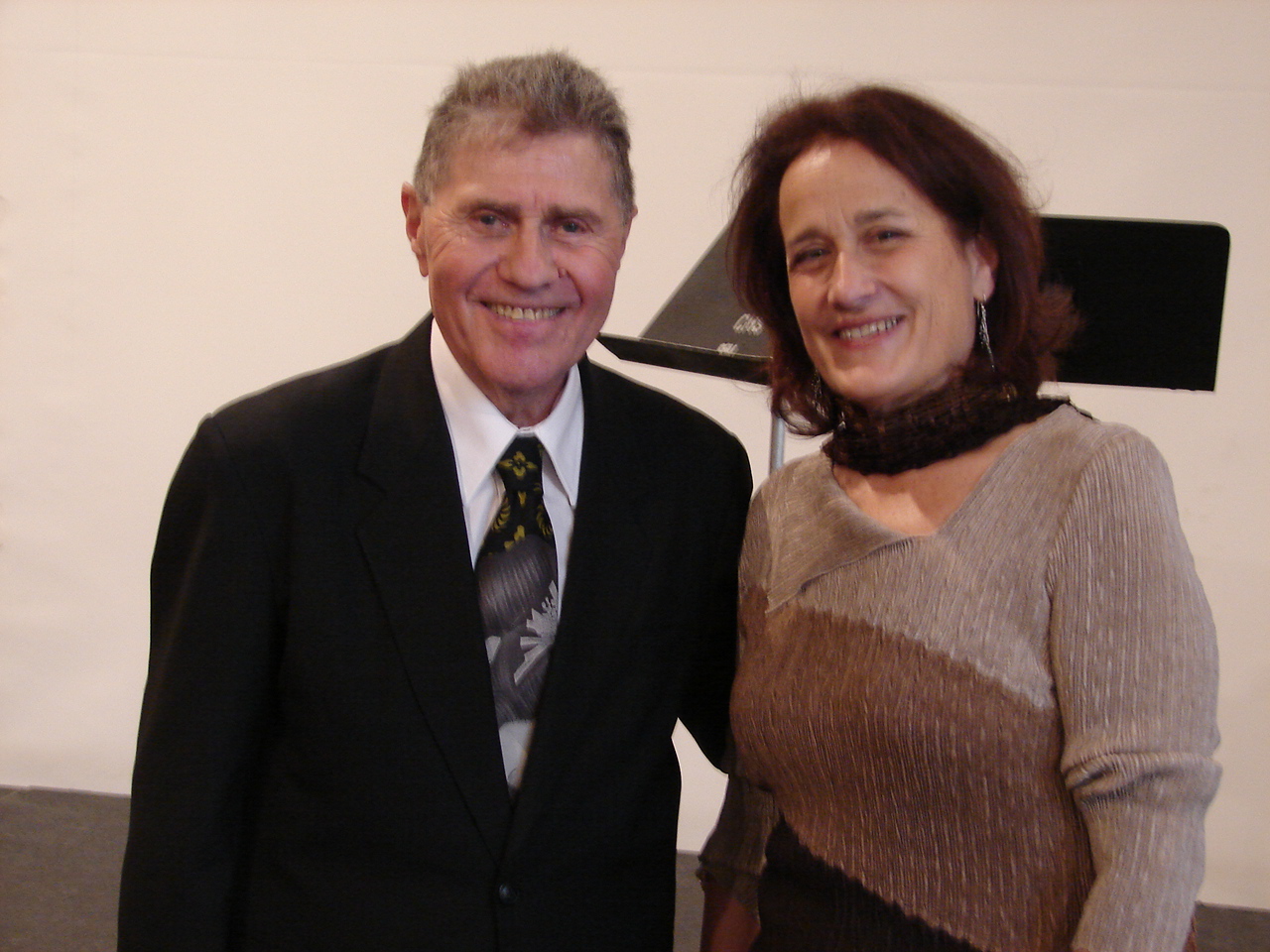














































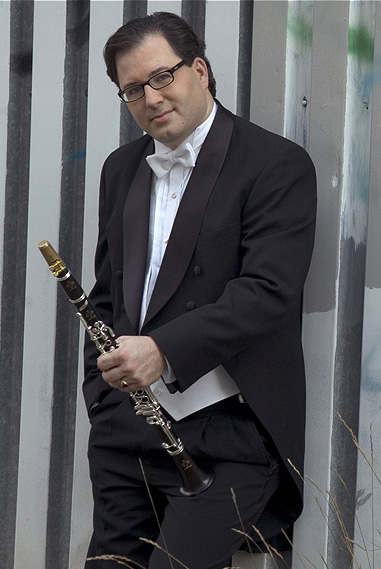




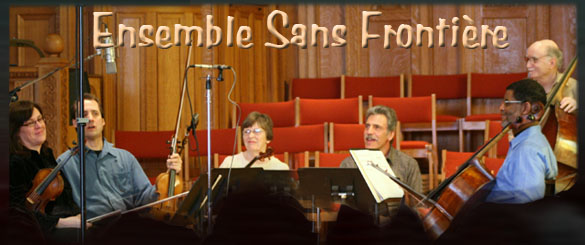
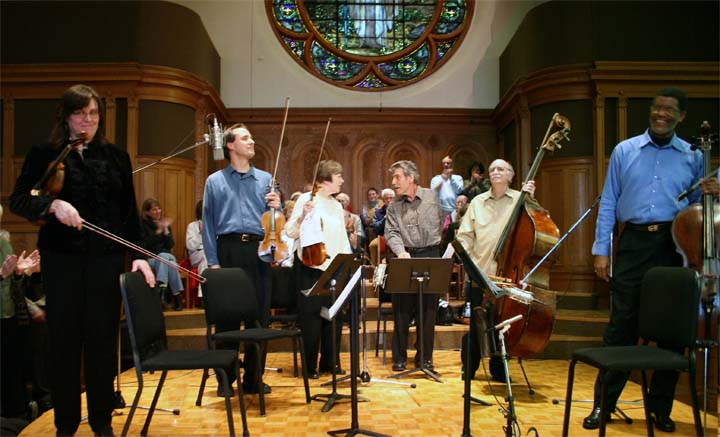
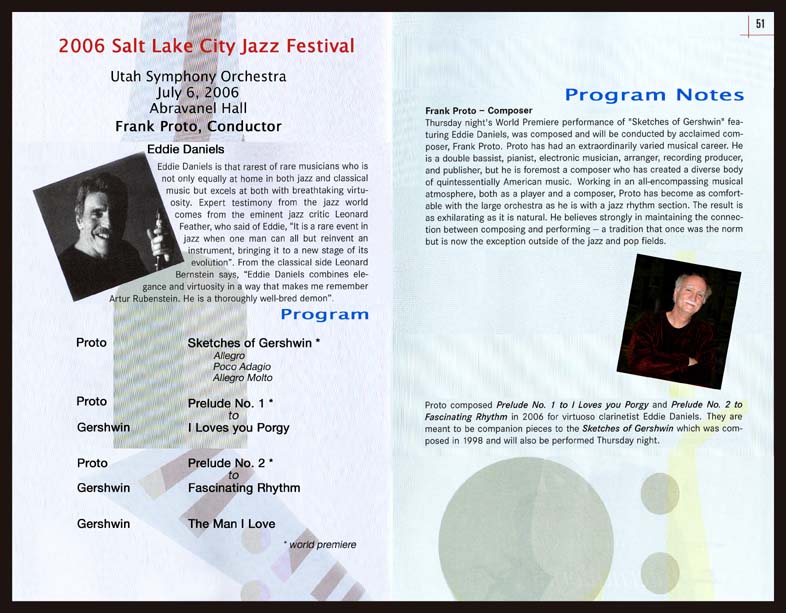
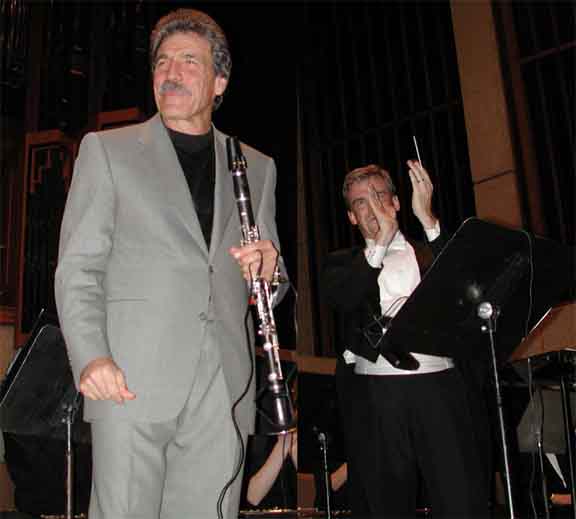
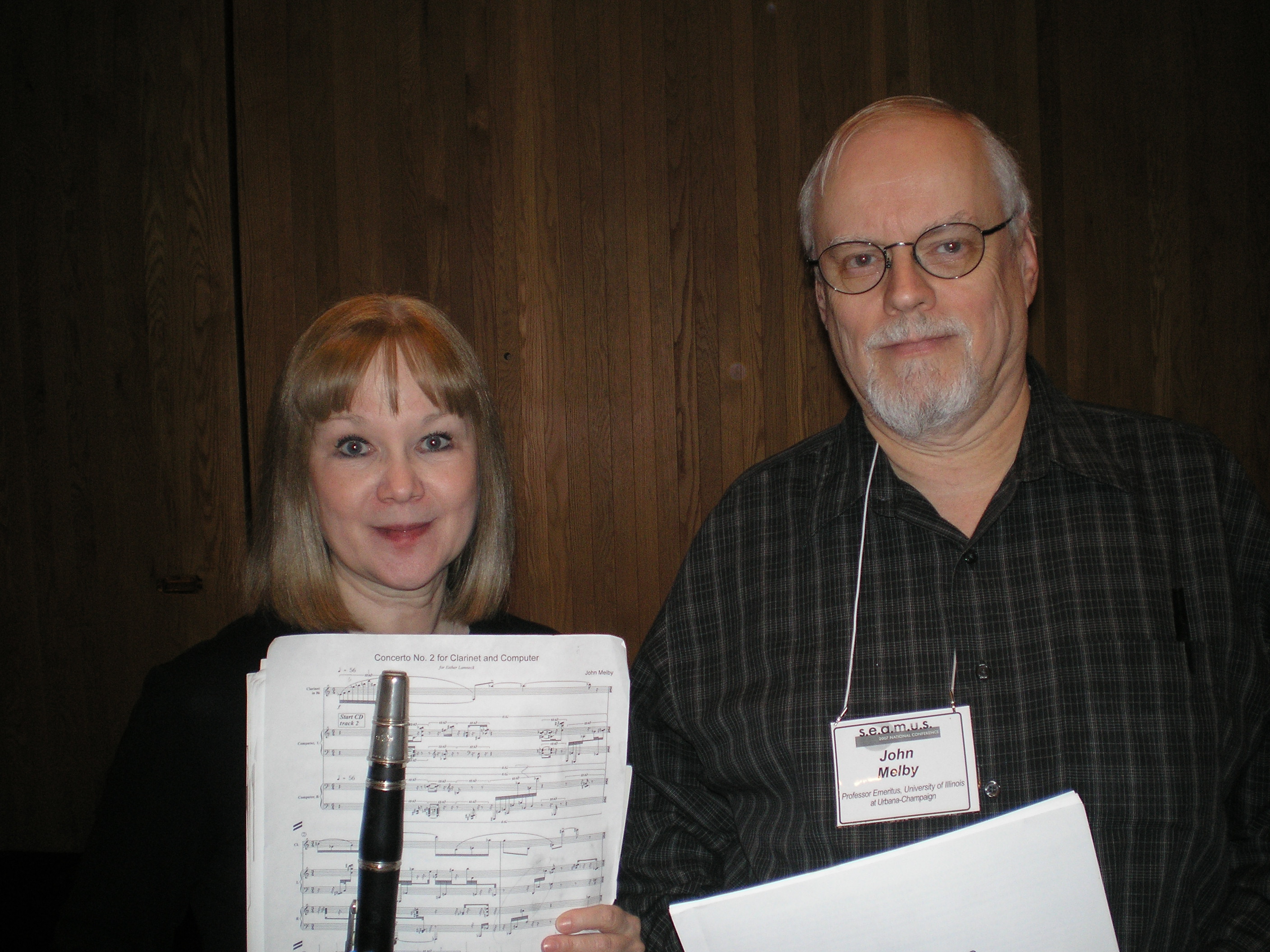



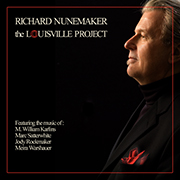

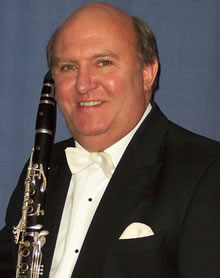
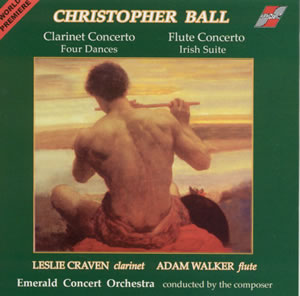
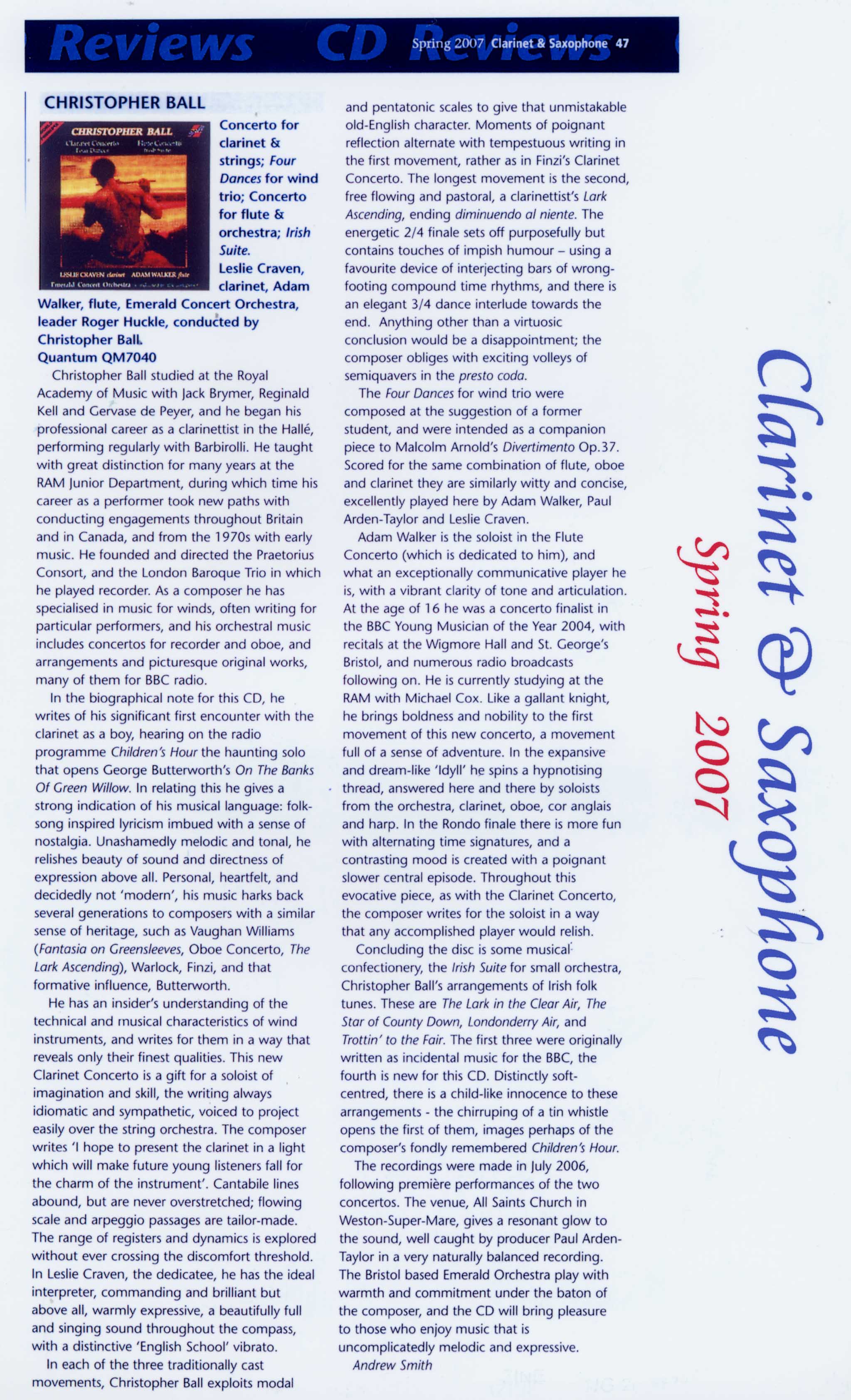

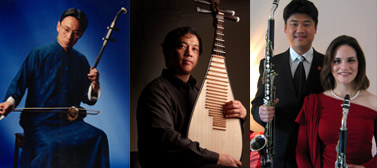

































 Steven R. Gerber
was born in 1948 in Washington, D.C. and now lives in New York City. He
received degrees from Haverford College and from Princeton University,
where he received a 4-year fellowship. His composition teachers included
Robert Parris, J. K. Randall, Earl Kim, and Milton Babbitt.
Steven R. Gerber
was born in 1948 in Washington, D.C. and now lives in New York City. He
received degrees from Haverford College and from Princeton University,
where he received a 4-year fellowship. His composition teachers included
Robert Parris, J. K. Randall, Earl Kim, and Milton Babbitt.  Gerber's
music is well-known also in Russia and Ukraine, where he has had
numerous tours with literally dozens of performances of his orchestral
works as well as many concerts of his solo and chamber works. Several of
his major works were given their world premieres there, including "Dirge
and Awakening" by the Russian National Orchestra under Mikhail Pletnev
at the Great Hall of the Moscow Conservatory, Violin Concerto by the
Novosibirsk Philharmonic under Arnold Katz, with soloist Kurt Nikkanen,
and Serenade Concertante by Chamber Orchestra Kremlin under Misha
Rachlevsky at the Small Hall of the Moscow Conservatory. Gerber has
written several works for famed Russian violinist Tatyana Grindenko.
Gerber's
music is well-known also in Russia and Ukraine, where he has had
numerous tours with literally dozens of performances of his orchestral
works as well as many concerts of his solo and chamber works. Several of
his major works were given their world premieres there, including "Dirge
and Awakening" by the Russian National Orchestra under Mikhail Pletnev
at the Great Hall of the Moscow Conservatory, Violin Concerto by the
Novosibirsk Philharmonic under Arnold Katz, with soloist Kurt Nikkanen,
and Serenade Concertante by Chamber Orchestra Kremlin under Misha
Rachlevsky at the Small Hall of the Moscow Conservatory. Gerber has
written several works for famed Russian violinist Tatyana Grindenko. 

















